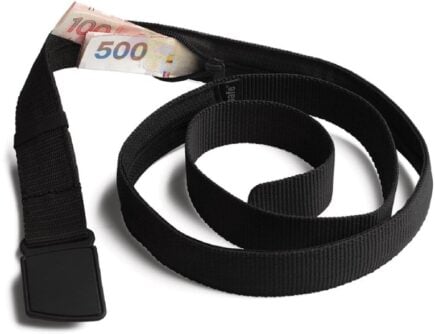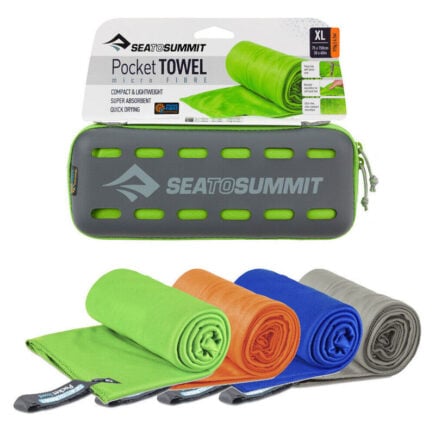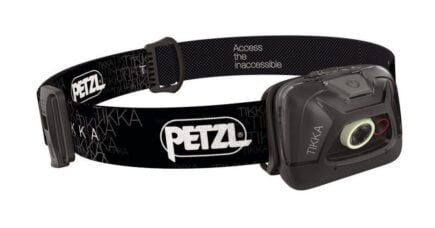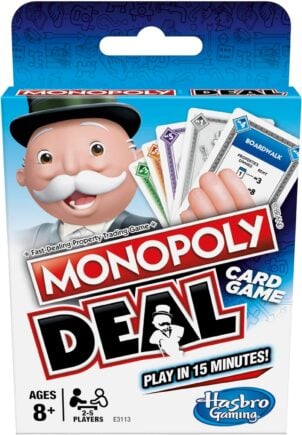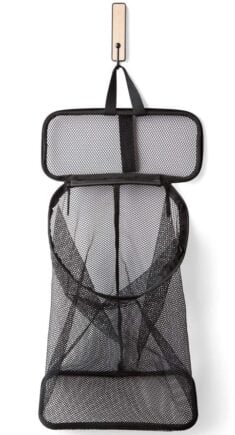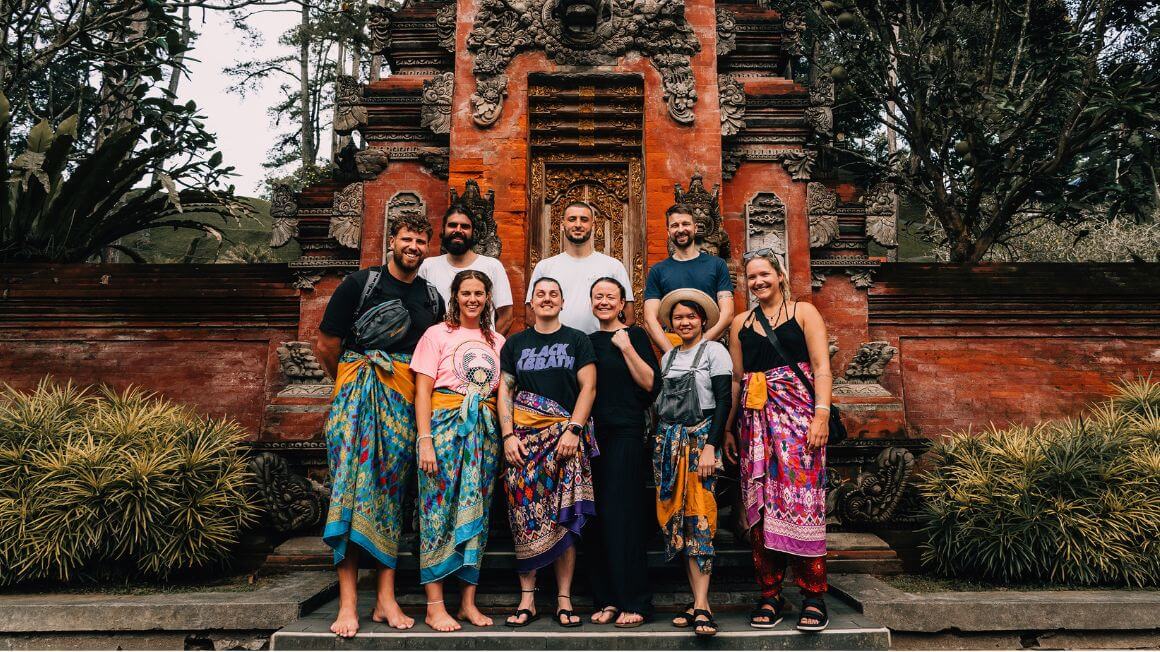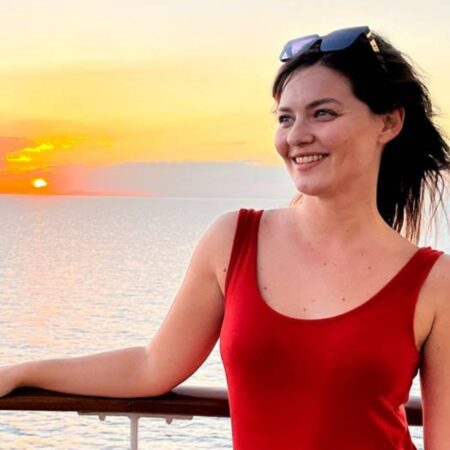The Broke Backpacker is supported by you. Clicking through our links may earn us a small affiliate commission, and that's what allows us to keep producing free content 🙂 Learn more.
You might not know much about Serbia, but you’ve definitely heard of Nikola Tesla, the genius inventor whose ideas shaped the modern world (or at least you’ve heard of the car brand named after him).
And if you follow tennis, then there’s no way you’ve missed Novak Djokovic, one of the greatest players of all time and practically a national hero here.
I was born in Belgrade, Serbia’s lively capital, and I’ve lived in Serbia all my life.
Since I was born in 1990, Serbia has changed its official name three times: from the Socialist Federal Republic of Yugoslavia, to the Federal Republic of Yugoslavia, then Serbia and Montenegro, and finally just Serbia since 2006.
It’s also pretty funny how often people confuse Serbia with Siberia (in Russia). I’ve had travelers ask me, “Is it really cold up there?”
Nope! Serbia actually has a moderate continental climate, with hot, dry summers (the last couple have been extremely hot) and chilly winters that bring some snow and rain, but nothing like Siberia-level cold.
Geographically, Serbia sits in the heart of the Balkans in Southeastern Europe, bordered by Hungary, Romania, Bulgaria, North Macedonia, Croatia, Bosnia and Herzegovina, and Montenegro.
While we don’t have a coastline, you’ll find half the country in Greece every summer. Serbians are among the most frequent tourists there, since we love the sea and it’s just a few hours’ drive away.
What’s Serbia really like? The people here are friendly, loud, warm-hearted, impulsive, and proud of their roots, a classic southern Balkan mix.
The country itself is full of contrasts. You’ll find ancient fortresses and brutalist buildings, slow-paced villages and buzzing cities, rich traditions and wild nightlife.
In this Serbia travel guide, I’ll share everything you need to know: from where to go, what to eat, how to get around, top things to do, and my best insider tips to help you make the most of your trip.
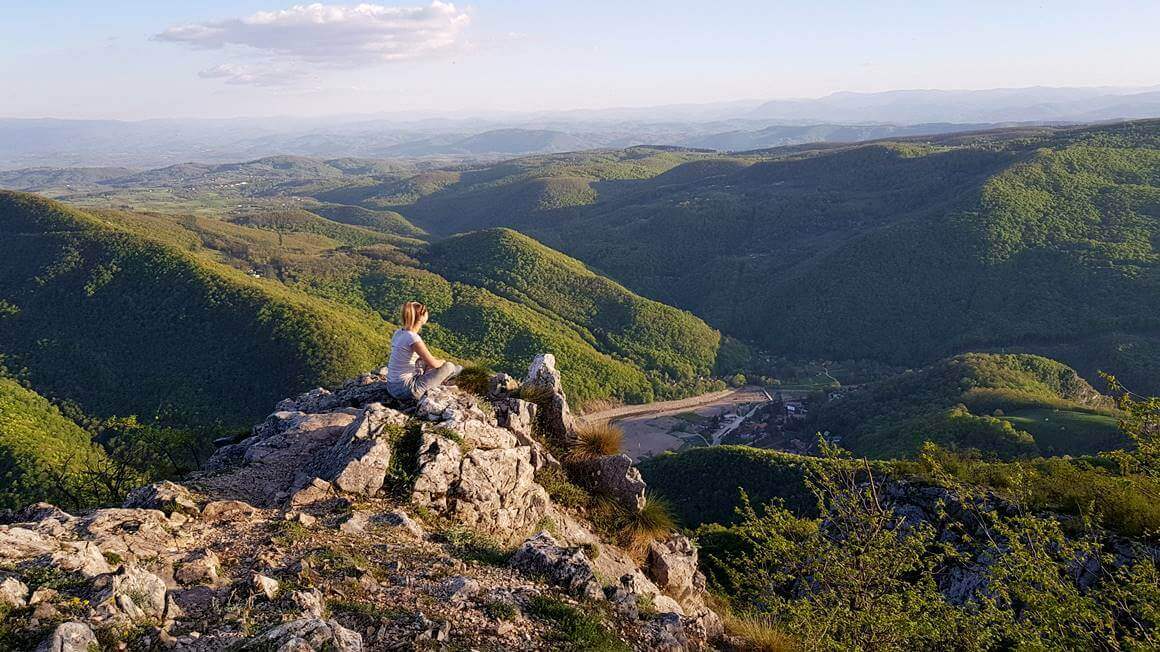
Photo: Katarina Komazec
The Broke Backpacker is supported by you. Clicking through our links may earn us a small affiliate commission, and that's what allows us to keep producing free content 🙂 Learn more.

Unlock Our GREATEST Travel Secrets!
Sign up for our newsletter and get the best travel tips delivered right to your inbox.
- Why Visit Serbia?
- Best Travel Itineraries for Serbia
- Best Places to Visit in Serbia (According to a Local)
- Top Things to Do in Serbia
- Backpacking in Serbia
- Backpacking Accommodation in Serbia
- Backpacking Costs in Serbia
- Money in Serbia
- The Best Places to Stay in Serbia
- Best Time to Travel to Serbia
- Staying Safe in Serbia
- How to Get Into Serbia
- How to Get Around Serbia
- Serbia’s Culture
- FAQs About Serbia
- Final Advice Before Visiting Serbia
- Buy Us a Coffee!
Why Visit Serbia?
Serbia, and the Balkans in general, isn’t overrun with tourists just yet, which means you can still enjoy authentic experiences, fewer crowds, and lower prices.
Sure, inflation has hit us like everywhere else, but Serbia remains very affordable compared to most of Europe, especially if you’re staying outside Belgrade. You can eat well for under $10, and comfortable accommodation doesn’t have to break the bank.
The nature here is so underrated. We may not have a coastline (I wish), but we do have epic hiking trails, waterfalls, canyons, national parks, and even wine regions.
Tara National Park and Uvac Canyon are some of the most beautiful places I’ve ever seen, and still mostly off the radar for international travelers.
Serbian cuisine is flavorful and meat-heavy (sorry, vegans). Grilled meats, slow-cooked stews, and cheese-filled pastries are part of everyday eating here.
But don’t worry, vegetarian and vegan options are becoming more and more available, especially in cities.
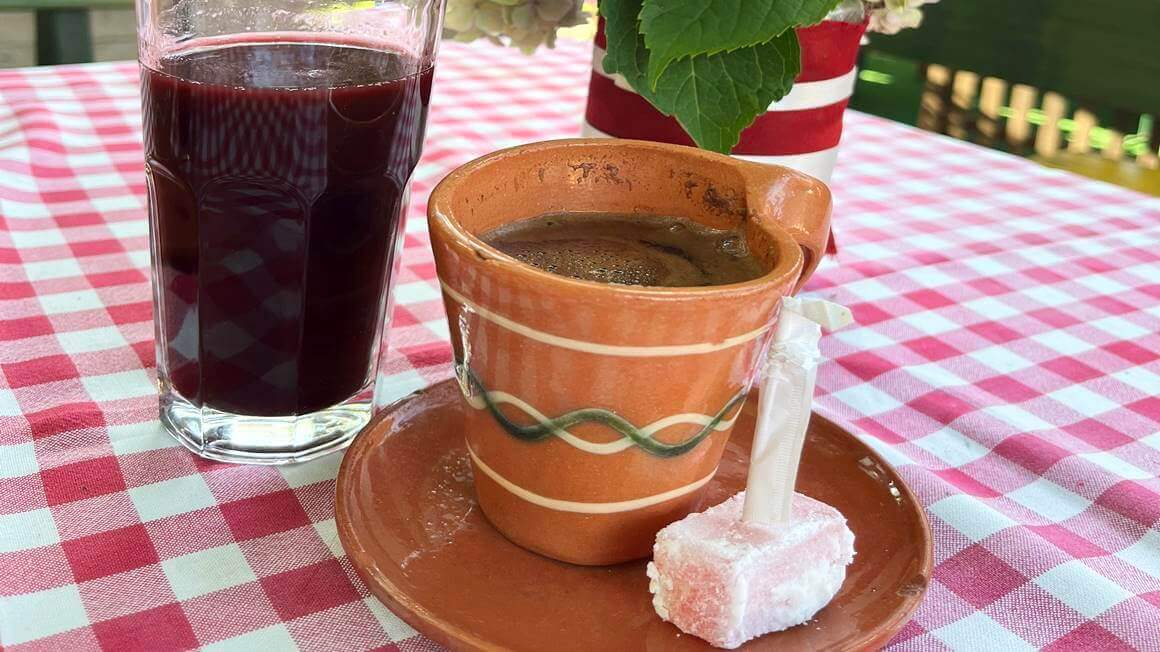
Photo: Katarina Komazec
We also have plenty of river fish, but seafood is usually frozen, since we don’t have a sea (hence the massive Serbian migration to Greece every summer).
You’ll feel history in every corner of the country. From Roman ruins and medieval monasteries to Ottoman fortresses and brutalist Yugoslav monuments, Serbia (like a lot of Eastern Europe) has a lot to tell…
And if you dive in, you’ll notice how much Serbs love to talk about history and politics. Here, everyone is philosopher and everyone thinks he/she is right. Funny, but so true.
The people? Loud, warm, and real. We may seem intense at first, but once you’ve made a Serbian friend, you’ve got a friend for life.
Expect to be welcomed into homes with rakija (our famous fruit brandy) and food. Especially in the countryside, you’ll likely be offered homemade rakija and prosciutto made right there on the property. It’s part of our culture, and it’s delicious.
And then there’s coffee. We don’t drink espresso or filtered coffee first thing in the morning. We drink domestic coffee, what others might call Turkish or Greek coffee. But here, it’s Serbian, of course.
I like to call it real coffee as it’s strong, thick, and full of flavor. If you haven’t tried it yet, please do!
More Reasons to Visit Serbia
Getting around Serbia is fairly easy and budget backpacker friendly. The country is compact and well-connected by bus, while our train infrastructure is not the best, but let’s say it’s improving.
The most modern line connects Belgrade and Novi Sad, another city worth visiting. Buses are more reliable for long-distance routes, and if you rent a car, you can see a lot in just a week or two.
Serbia is also a cultural melting pot. You’ll see Orthodox churches next to Austro-Hungarian architecture, Ottoman mosques beside modern shopping centers.
In the north, Vojvodina still carries that Austro-Hungarian influence in architecture, while in the south, Ottoman influence is more present, especially in towns with large Muslim communities, like Novi Pazar.

Serbia’s official script is Cyrillic, but don’t be surprised to see the Latin alphabet used just as often. Both scripts are part of everyday life here, so you’ll see signs, menus, and messages in either or both.
Oh, and rakija. This famous national drink is part of everyday life here, especially in the countryside where it’s usually produced. The best rakija is always homemade, strong, and comes with a story.
And finally, while I often say Serbia offers so much more than just parties, I have to admit:
Belgrade’s nightlife is legendary. From splavs (floating nightclubs on the river) to kafanas with live folk music, Serbs know how to party. And we go hard, often until the sun comes up.
We are also famous for world-class festivals like EXIT Festival in Novi Sad and Lovefest in Vrnjacka Banja, and you’ve got a nightlife scene that can rival anywhere in Europe.
Best Travel Itineraries for Serbia
Serbia is a relatively small country, stretching about 450 km (280 mi) from north to south, and around 250 km (155 mi) from east to west. Most travelers to Europe skip it, but if you’re reading this, you clearly know that’s a bad idea!
The country has a population of approximately 6.6 million people, but there’s also a large Serbian diaspora of over 4 million living abroad, many of whom left during the wars and economic hardships of the 1990s.
Being compact has its advantages: you can cover many of Serbia’s highlights in just two weeks, but even if you’re staying only a few days, you can still get an idea of what the country has to offer.
Below, I’ll walk you through a few itinerary ideas depending on how long you plan to stay.
#1 Serbia itinerary – 3-5 days
This short itinerary is perfect if you’re flying into Belgrade and want a general overview of the city and nearby attractions.
Belgrade, Serbia’s capital, is a must-see, and truly one of the most underrated backpacking destinations. I recommend spending at least two full days exploring the major highlights.
Day 1: Welcome to Belgrade
Serbia’s capital has a long, turbulent history. It has been bombed more than 40 times over the centuries, including during both World Wars and the 1999 NATO bombings. And yet, just like a phoenix as I like to say, it always rises again, full of energy and life.
Every visit to Belgrade starts with Kalemegdan Fortress, also known as Belgrade Fortress, perched above the confluence of the Danube and Sava rivers. Besides amazing views, you’ll feel the centuries of history literally at every corner. The most famous historic monument here is The Victor, built after the WWI to commemorate the victory of the Allies. You’ll also find the Belgrade Zoo here, although there have been talks for years about moving it to Ada Ciganlija, a popular park and lake about 7 km away from the center.
From there, you can continue down the Knez Mihailova Street, the city’s main pedestrian zone, lined with cafes, shops, and beautiful 19th-century architecture. In the evening, head to the bohemian and very touristy (yet a must-see) Skadarlija district for traditional Serbian food, live music, and, of course, a shot (or two) of rakija.
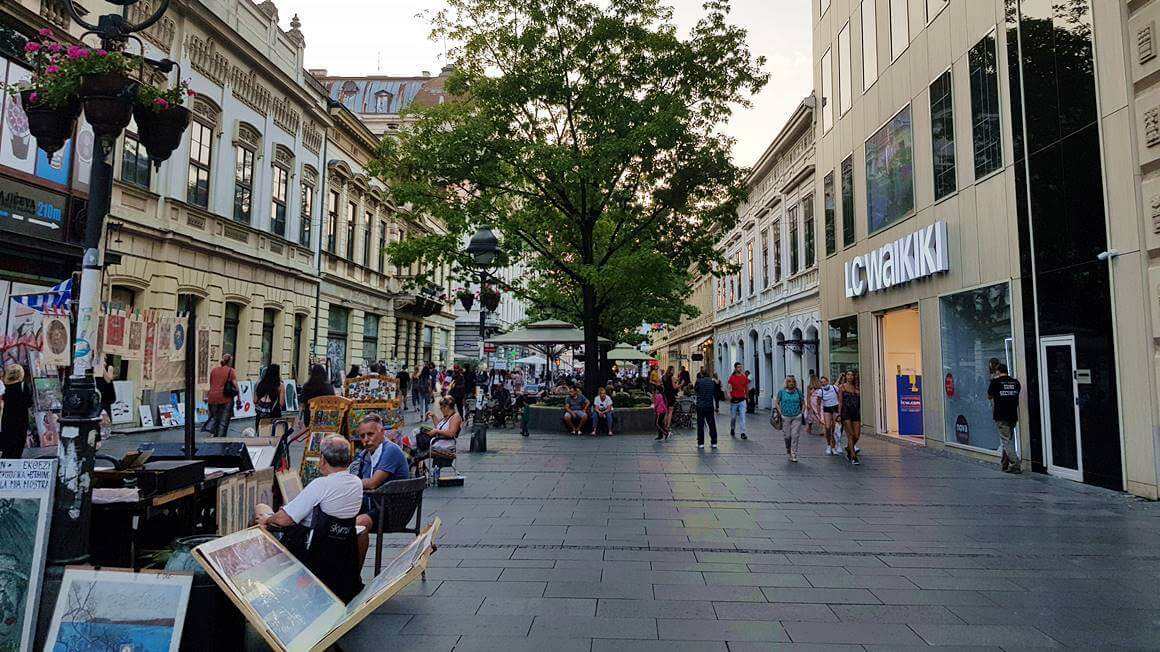
Photo: Katarina Komazec
Next, head to the impressive Church of Saint Sava, one of the largest Orthodox churches in the world, named after named after Saint Sava, the founder of the Serbian Orthodox Church and one of the most important figures in Serbian history.
It’s about a 20-minute walk from the city center and completely free to visit (almost all churches in Serbia are entry-free). The church’s white marble façade and massive green dome dominate the Belgrade skyline, and the interior is covered with 24-karat gold mosaics, including a glowing image of Christ that spans over 1,200 square meters.

Getting around is easy. Belgrade city center is mostly walkable and relatively flat, but public transportation is also available and, guess what, completely free as of January 2025! Unfortunately, we don’t have a metro (long story…) but we do have buses, trams and trolley buses.
You can hop on bus #31 or trolley buses #40 and #41 from the city center to reach St. Sava Temple. Most major attractions, like Kalemegdan Fortress and St. Sava Church, are also free to enter.
Day 2: Museums, Belgrade Waterfront and Zemun
On your second day, I suggest exploring Belgrade’s culture and history by visiting some of the city’s most famous museums.
The Nikola Tesla Museum is a must-see, even if science isn’t your thing. Honestly, I’ve always felt someone like Tesla deserves a much bigger space, and while there are plans to move the museum to a more impressive location, nothing’s been finalized yet. For now, it’s tucked away in a small villa on Krunska Street, near the Parliament building. It’s a compact but fascinating place, with original artifacts and live demonstrations that really bring Tesla’s genius to life.
The National Museum is another must-see, as it’s the largest and oldest museum in Serbia, right on Republic Square. Believe it or not, it was closed for renovations for more than a decade and finally reopened in 2018. Today, it houses an impressive collection of art and artifacts, from prehistoric times to modern-day Serbia, including works by famous international artists like Picasso and Van Gogh.
Another museum many tourists find interesting is the Museum of Yugoslavia, which offers a nostalgic look into the Tito era and the history of the former Yugoslavia. The complex also includes Tito’s mausoleum, known as the House of Flowers. His personality and legacy still divide opinions: some admire him, others strongly criticize, but there’s no denying his impact on the region.
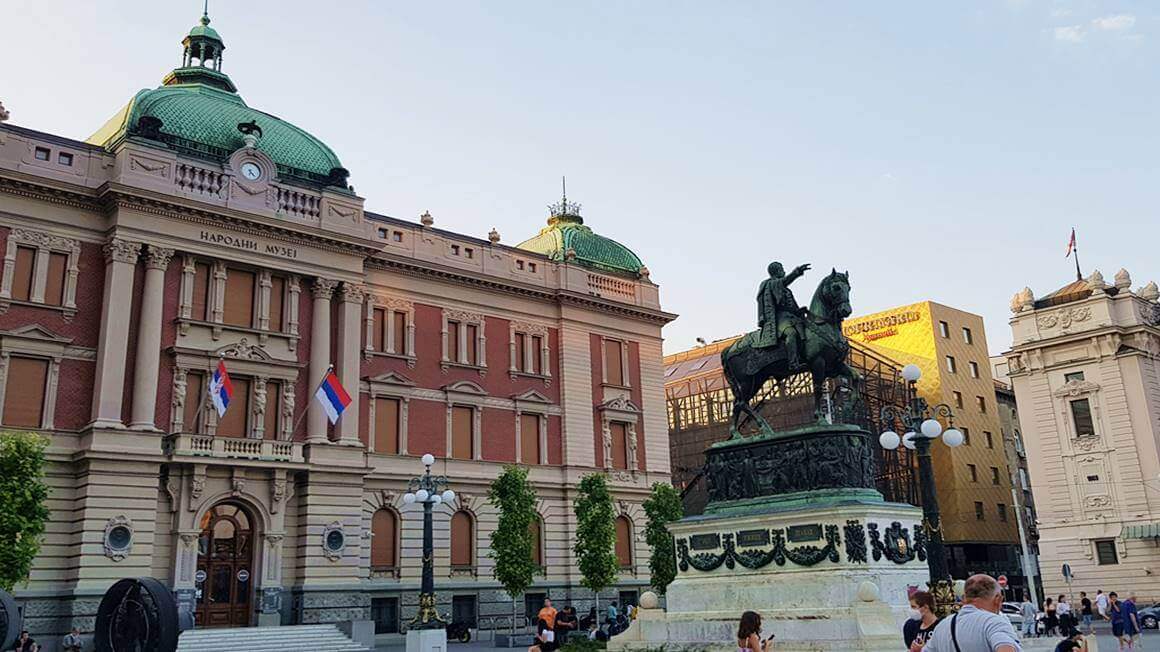
In the afternoon, explore the Belgrade Waterfront, a modern riverside district with parks, restaurants, and luxury residences. This upscale quarter is located right below Kalemegdan Fortress on the Sava River, and it’s a striking contrast to the city’s historic side.
Did I mention Serbs love to complain? The Waterfront has faced plenty of criticism, many locals feel it’s overpriced, overly luxurious, and “not for ordinary people,” saying it’s destroyed Belgrade’s authentic riverbank. But regardless of the controversy, it’s wildly popular and undeniably gives Belgrade a modern, almost Dubai-like vibe.
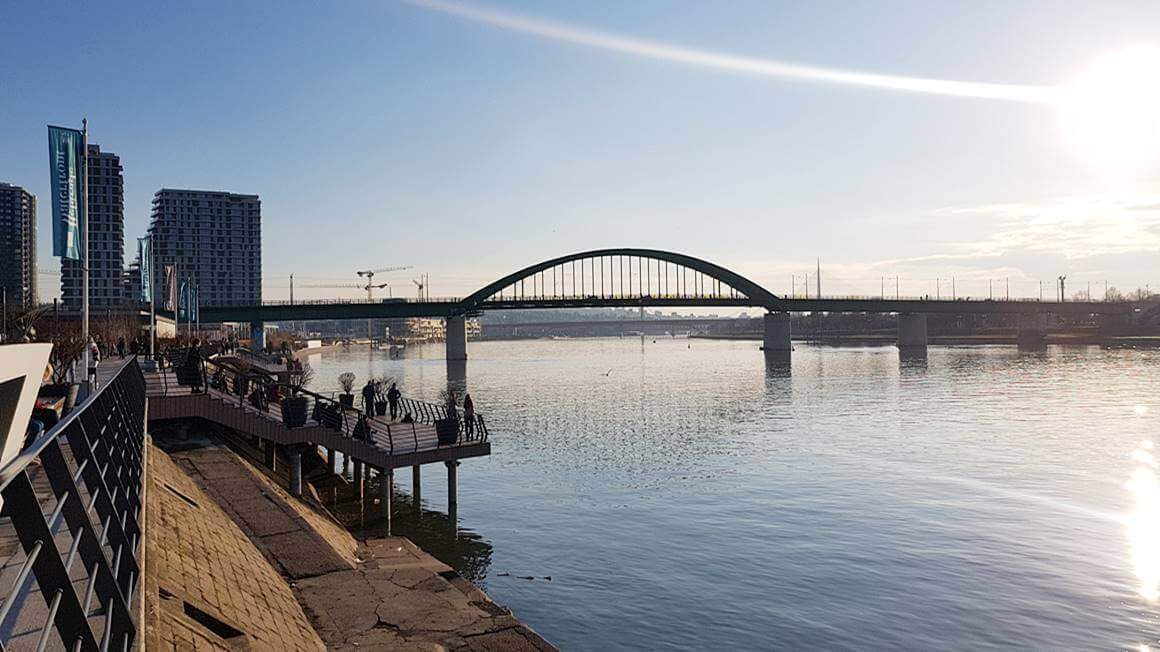
Photo: Katarina Komazec
From there, you can easily cross the river to Zemun, once a separate Austro-Hungarian town and now an old, riverside district of Belgrade. Many locals still proudly call themselves “Zemunci” and insist Zemun isn’t really part of Belgrade at all.
In this area, you can walk up to the Gardoš Tower for panoramic views over the Danube and city skyline. Go there at sunset for Instagram-perfect shots.
In the evening, you can go out on one of the famous splavs (floating river clubs) along the Sava or Danube, or check out the Belgrade Waterfront promenade.
If you like shopping or just want to cool down, stop by Galerija Belgrade, the largest shopping mall in the Balkans.
Day 3: Day Trip to Novi Sad or Topola & Oplenac
For your third day, take a break from the capital and go on a day trip.
Just a 30-minute ride by fast-speed “Soko” train from Belgrade, Novi Sad is Serbia’s second-largest city and home to the iconic Petrovaradin Fortress, often called the “Gibraltar on the Danube.”
The highlight of Novi Sad is the beautiful Trg slobode (Liberty Square) with its neo-Gothic Name of Mary Cathedral. In this beautiful city, you can stroll down the Danube Promenade, feed the ducks and swans in Dunavski Park, or go shopping in the Old Town.
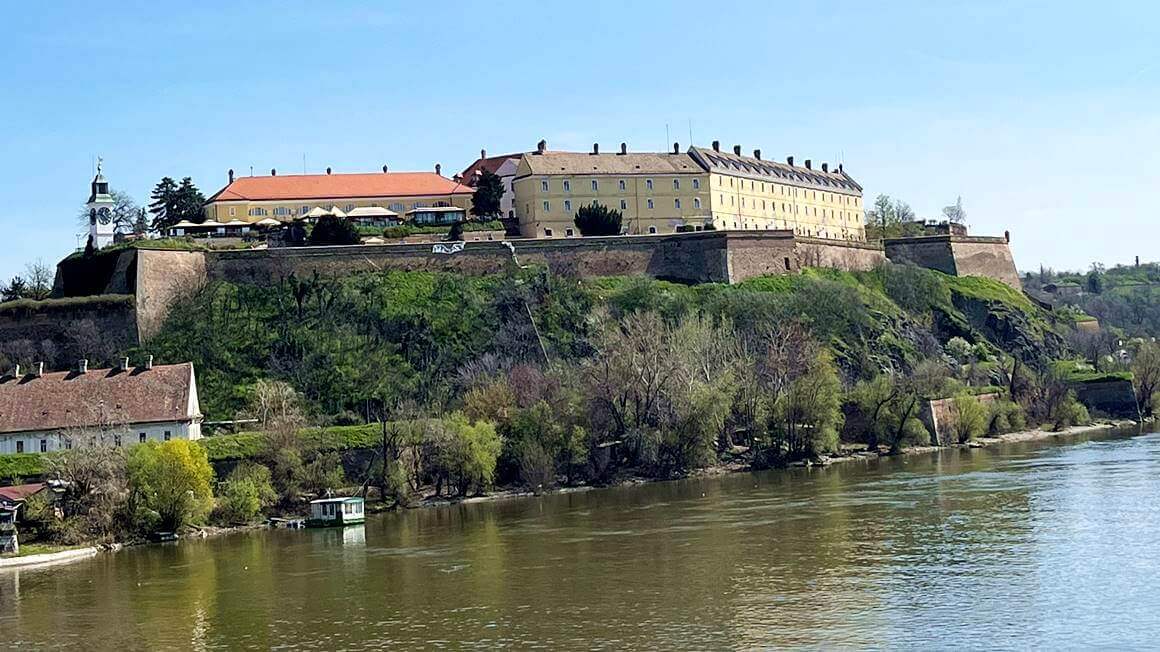
If you are a wine lover, go wine tasting in nearby Sremski Karlovci, a lovely baroque town known for its centuries-old wine tradition.
Alternatively, if you’re into Serbian royal history (and also wine), head to Topola, a historic town in central Serbia. Here, you can visit Oplenac Hill, with the magnificent Church of St. George, renowned for its stunning mosaics and home to the tombs of the Karadordevic royal family. You can also stop at local wineries for tastings of traditional Serbian wines.
Days 4–5: Gems of Western Serbia
If you’ve got a couple of extra days, head to Western Serbia, one of the country’s most scenic regions.
The main highlights here include Tara National Park, known for its dense pine forests, wild rivers, hiking trails, and Uvac Canyon, famous for its emerald-green meanders and griffon vultures.
You can take a nostalgic ride on the Šargan Eight Railway, a narrow-gauge heritage train that winds through mountain tunnels and valleys. You’ll witness some of the most breathtaking landscapes in Serbia along the way!
In this area, you should not miss Drvengrad, a traditional-style wooden village built by film director Emir Kusturica for his movie “Life is a Miracle”. This unique, handcrafted town has attracted international stars like Johnny Depp, who even has a statue in his honor here, and Monica Bellucci, who visited during the annual Küstendorf Film and Music Festival.
Finally, I suggest you spend an overnight in Zlatibor, a favorite mountain resort known for its fresh air, pine forests, walking trails, and delicious local cuisine. And, get ready to load up on calories: Zlatibor isn’t exactly light on the stomach!
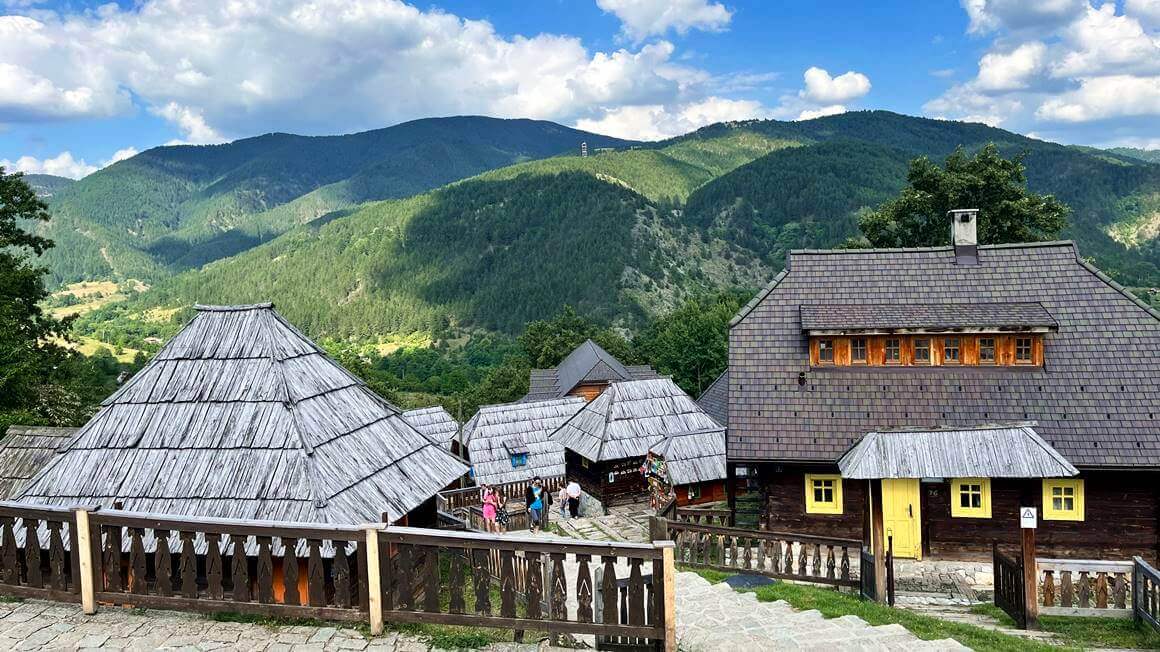
Photo: Katarina Komazec
The nature in Zlatibor is beautiful, so I definitely recommend staying outside the center, which is often packed with loud music, clubs, and kafanas. This mountain resort is surprisingly more expensive than Belgrade, but you can still find budget-friendly accommodation if you avoid the busy town center.
One of the top picks in the area is the Zlatibor Gold Gondola, the longest panoramic gondola lift in the world, offering stunning views over the mountains, forests, and Ribnicko Lake. It’s a relatively new attraction here, and it’s a must.
If you decide to follow this itinerary, I suggest you stay in Belgrade for 3 – 4 nights, as it makes a great base for easy day trips to Novi Sad and Oplenac.
For exploring Western Serbia, Zlatibor is the best place to stay, as it offers a wide range of accommodation options, from budget-friendly guesthouses to high-end hotels and spa resorts.
#2 Serbia Itinerary: Serbia in a Week
If you’ve got a week or a little more, you can experience the true diversity of Serbia, from cities like Belgrade and Novi Sad to mountain villages and hidden gems scattered across the countryside.
You should again start your journey in Belgrade. Spend two days exploring the city’s highlights: Kalemegdan Fortress, Knez Mihailova Street, Skadarlija, St. Sava Temple, Nikola Tesla Museum, Museum of Yugoslavia, Zemun, Gardoš Tower, splavs, Belgrade Waterfront.
On Day 3, you can take a train or bus to Novi Sad for a full day of sightseeing: Liberty Square, the Name of Mary Cathedral, Petrovaradin Fortress, the Danube River Promenade and optional wine tasting in Sremski Karlovci.
You can return to Belgrade in the evening or spend the night in Novi Sad if you prefer a slower pace.
On Day 4, I would definitely suggest you head to Topola, as it’s just about an hour from Belgrade. Visit the St. George Church on Oplenac Hill, and explore the Royal Mausoleum of the Karadordevic dynasty, where Serbian royalty is buried.

For the next couple of days, head west to Zlatibor, a popular mountain resort that makes a perfect base for exploring Western Serbia’s highlights like the scenic Šargan Eight Railway, the village of Drvengrad, and breathtaking nature in Tara National Park and Uvac Canyon.
For the rest of your trip, I would personally choose southeastern Serbia and head to Niš, one of the country’s oldest cities, rich in Roman and Ottoman heritage.
You can explore the iconic Niš Fortress, visit the chilling Skull Tower (Cele Kula), and take a stroll through the lively city center filled with cafes, bakeries, and street musicians.
Don’t leave without trying burek – Niš is known for serving some of the best in the country!
Niška Banja, a nearby spa town, is famous for its healing thermal waters and is a top pick for those of you looking to relax.
Niš is located just a 2-hour drive from Belgrade, so you can visit it on a day trip or opt for a short overnight stay. If you choose to spend the night, you’ll find plenty of comfortable and affordable accommodation options right in the city center, close to all the main sights and local eateries.
#3 Serbia Itinerary: Two Weeks in Serbia
If you have two full weeks to explore Serbia, I highly recommend renting a car, as it gives you the flexibility to reach remote areas and explore at your own pace.
Start with everything already mentioned: Belgrade, Novi Sad, Sremski Karlovci, Topola & Oplenac, Zlatibor, Drvengrad, Šargan Eight Railway, Tara National Park, Uvac Canyon, Niš, and Niška Banja.
With the extra time, consider adding the medieval Golubac Fortress & Derdap National Park, located around 2 hours’ drive from Belgrade. Golubac is a medieval fortress strategically perched above the Danube and offers stunning views of the river. Derdap is also known as the Iron Gate and is home to Roman monuments, epic cliffs, and some of the best viewpoints in the country. I personally love Golubac, and as someone who travels a lot, I can honestly say it’s not something you come across every day.
Near Golubac and Derdap, you can explore Lepenski Vir, a fascinating prehistoric archaeological site and one of the oldest known human settlements in Europe.
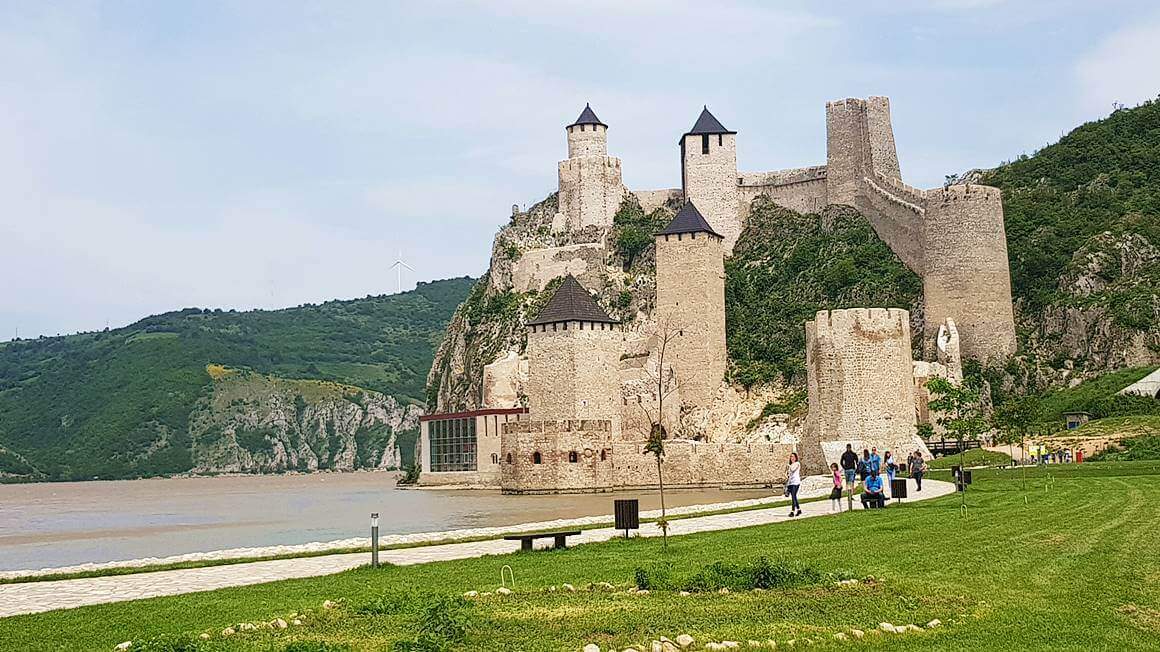
Photo: Katarina Komazec
And, if you’re into hiking, Rtanj Mountain will definitely be a challenge for you.This mystical, pyramid-shaped peak is loved by hikers and folklore fans, and some even say it holds secret energy. Most hikes start from the village of Rtanj or from the nearby town of Boljevac, and reaching the top takes around 3 to 4 hours. The fun part is: hikes start at night!
And then, if you are into medieval history and Serbian Orthodox heritage, you can save a day or two to explore Serbian monasteries, like Studenica & Žica, two of Serbia’s most important medieval Orthodox monasteries, both UNESCO-listed.
In the Resava Region, a must-see is Manasija Monastery, an impressive monastery surrounded by massive medieval stone walls that make it look like something out of a movie. While you’re in the area, make it a full day trip with a visit to the Lisine Waterfall and the Resava Cave.
Other spots worth checking out include Vlasina Lake, the Timok Wine Region around Negotin and Rajac for local vineyards, and Pirot, known for its handmade Pirot kilims, beautiful traditional rugs with serious cultural value.
With a car and two weeks, you can easily navigate through northern, central, western, and southeastern Serbia, and experience the best of what country has to offer.
Best Places to Visit in Serbia (According to a Local)
You’ve probably seen the classic itineraries already, but I wanted to give you a slightly different view. These are places I personally think you shouldn’t skip, based on what kind of traveler you are.
Belgrade – Serbia’s Capital
You can’t really visit Serbia without spending some time in Belgrade. It’s not the prettiest city and definitely not the cleanest, but it’s got this energy that just makes you feel at home. Honestly, I’ve never met a single foreigner who said they didn’t like it.
Belgrade also offers a huge variety of things to do, see, and experience, and there’s something for every taste and budget, including some epic backpacker hostels.
Of course, you should check out the classic sights I mentioned earlier, but there are also a few lesser-known spots I always recommend.
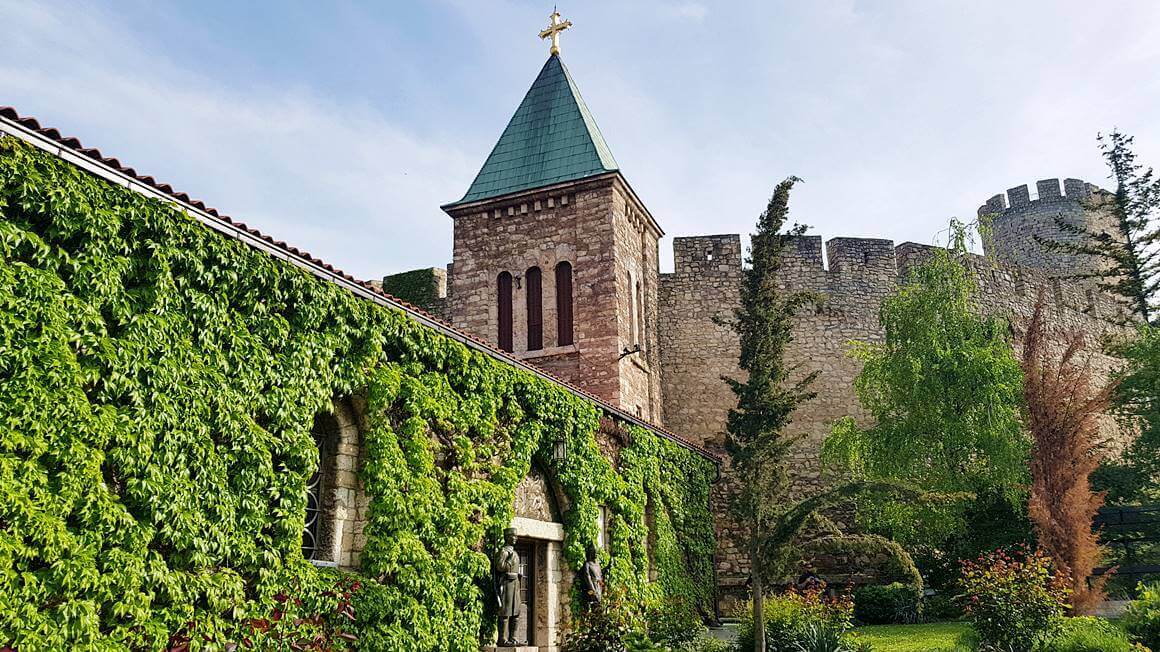
For example, at Kalemegdan, you can book the Underground Belgrade tour and explore the city’s hidden layers, from old military bunkers and Roman wells to secret tunnels and stories that most tourists never hear.
Also on Kalemegdan, don’t miss the Ružica Church, a small and beautiful chapel built into the fortress wall, famous for its chandeliers made from melted-down bullets and swords.
Just nearby is the Spring of Saint Petka, a site many locals visit to light a candle or fill up a bottle of the spring’s water, believed to have healing properties.
But if you ask any local, they’ll tell you the real beauty of Belgrade isn’t in its main attractions. And, I couldn’t agree more.
Locals love places like Ada Ciganlija, especially in the summer. Known as “Belgrade’s Sea,” it’s a man-made lake with beaches, sports facilities, bike trails, and tons of cafés and restaurants lining the water.
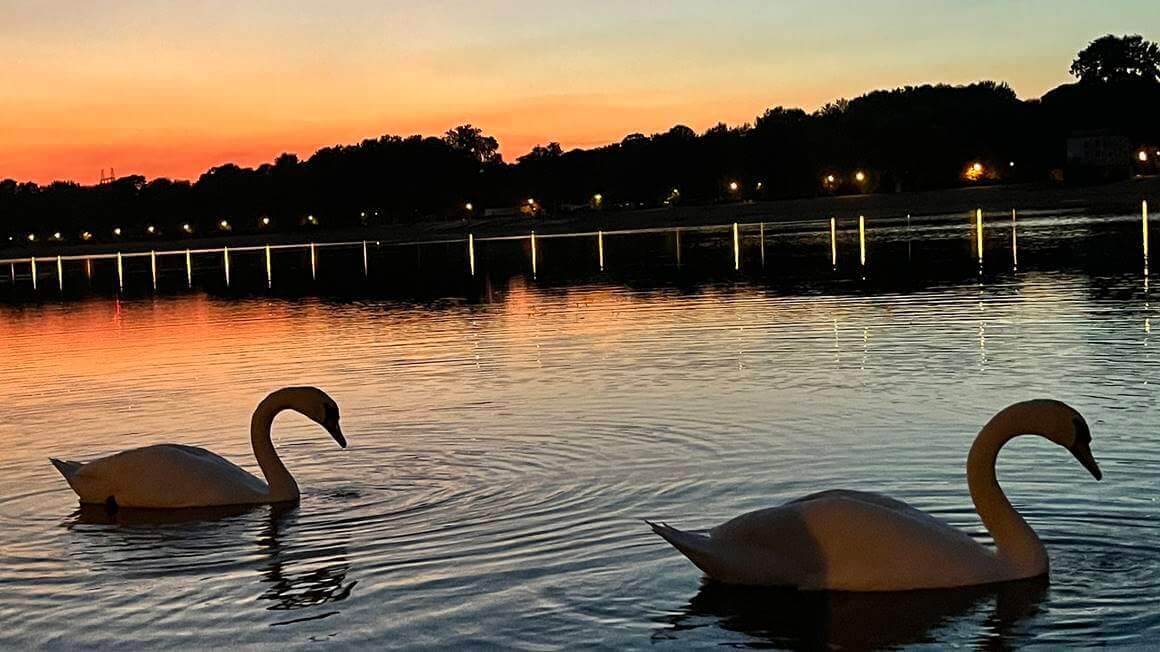
Photo: Katarina Komazec
And just a few minutes away by car is Košutnjak, a forest and park where I live, less than a 10-minute walk from my home. The area has swimming pools, tennis courts (I spotted Novak Djokovic a couple of times), and lots of space to hike or relax. The best part is it’s only about 7 km from downtown, and super easy to reach by public transport.
And of course, there’s Novi Beograd, our concrete jungle of endless apartment blocks and wide boulevards. It might look like nothing special to visitors, but people who live here are so proud of it, they’d never move anywhere else. I guess there’s something in Novi Beograd that just grows on you.
You’ll learn one thing here. Belgrade is not pretty in the traditional sense, but it’s real. And that’s kind of what Belgrade is all about.
Novi Sad – Elegant, Lively, and Full of Beautiful People
Novi Sad is definitely a city worth your visit. It used to be known as this quiet, laid-back alternative to Belgrade, but that’s changing fast.
Thanks to the growing IT scene, start-ups, and creative industries, the city is booming, and it’s quickly becoming a favorite place to live for people in those fields.
It’s smaller and easier to navigate than Belgrade, and overall more affordable, whether it’s cafés, groceries, or even apartment prices.
The city’s main landmark is Liberty Square (Trg slobode), home to the beautiful Name of Mary Catholic Church, a Neo-Gothic building dating back to the late 19th century.
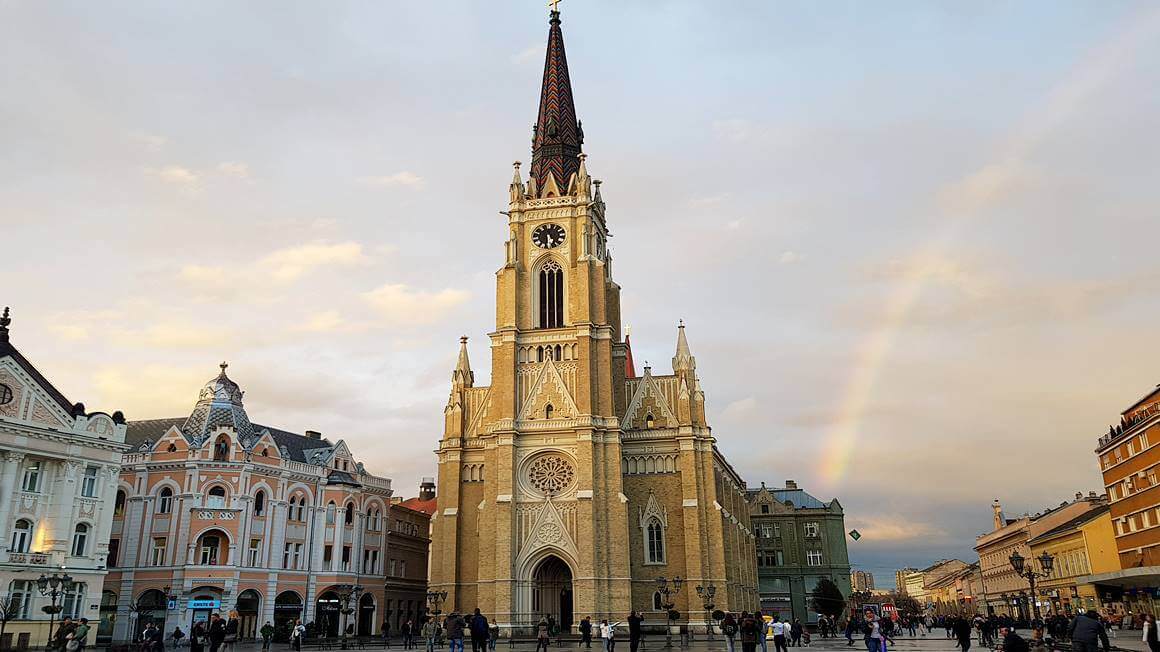
From there, you can take a stroll along the main promenade, lined with cafés and shops, all the way to Dunavski Park, a peaceful green oasis where you can feed ducks and swans or just chill by the water.
You absolutely have to visit the Petrovaradin Fortress, too. It offers amazing panoramic views of the city and the Danube, and you can also take a guided underground tour of the fortress tunnels.
And people? Novi Sad is known for beautiful women and men, stylish, cool, and somehow always well-dressed, even at 9 a.m. And it’s not just me saying that, the city is generally known for its well-dressed, fancy crowd, and locals take pride in looking good no matter the occasion.
If you’re lucky enough to visit Novi Sad during the EXIT Festival in July, prepare for a fantastic time, with music, energy, and people from all over the world packed into one legendary party under the fortress walls.
You can easily visit Novi Sad from Belgrade, as it’s just 45 minutes by car or a quick 30-minute ride on the new Soko fast train. There’s plenty of accommodation available, from stylish boutique hotels to cozy apartments, so you won’t have any trouble finding a place to stay that fits your style and budget.
Novi Sad also makes a great base for exploring the north of Serbia and the wider Vojvodina region. From here, you can easily visit beautiful towns like Sremski Karlovci, Subotica, Palic Lake, or explore the Fruška Gora Monasteries and wine routes, all just a short drive away.
Tara National Park – Home to Brown Bear and Epic Viewpoints
Tara National Park is one of Serbia’s five national parks, and hands down one of the best places to experience untouched nature and epic viewpoints. Unlike nearby Zlatibor, which is growing fast and packed with attractions, Tara still feels raw, peaceful, and wild.
This is the place to go if you want fresh mountain air, quiet forests, and views that actually make you stop and just stare.
Tara is also home to Serbia’s brown bears, who still roam freely through its dense forests. But, don’t worry, they are shy and rarely seen.

Photo: Katarina Komazec
Some of the most beautiful viewpoints in Serbia are here, including my personal favorite and probably the most iconic, Banjska Stena, which offers jaw-dropping views over the Drina River canyon and Lake Perucac.
A great base for exploring Tara is Mitrovac na Tari, a little village from where you can hike to Banjska Stena viewpoint. The hike itself is well-marked and takes about 1.5 to 2 hours round trip, depending on your pace.
Alternatively, you can drive closer and walk the final 15-20 minutes. There are also other access points, depending on your route and starting point.
Nearby, don’t miss Drvengrad, the traditional wooden village built by film director Emir Kusturica, and the nostalgic Šargan Eight Railway, which winds through mountain tunnels and valleys.
Also nearby is Kremna, a quiet village known for its stunning mountain views, delicious local food, and the famous Kremna Prophets, who are part of a long-standing local legend that attracts the curious today.
Kopaonik – Serbia’s Favorite Ski Resort
Kopaonik is Serbia’s most famous ski resort, with over 60 kilometers of groomed ski slopes and a solid infrastructure that keeps getting better each year.
I’m not a skier myself and I’ve only been once, but everyone knows that half of Belgrade ends up there during winter holidays.
It’s the go-to place for skiing, snowboarding, and after-ski cafés. Just keep in mind, Kopaonik is definitely on the pricier side, especially when it comes to accommodation and food at the top. But it’s definitely cheaper than most other winter destinations in Europe!
The good news? It’s just as beautiful in summer. You can go hiking, mountain biking, or just relax in nature with cooler air and forest views. Don’t miss Pancicev Vrh, the highest peak of the mountain (2,017 m), named after Serbian botanist Josif Pancic. There’s even a small chapel up there and a stunning view that makes the hike totally worth it.
Niš – History Hub and Gateway to Southeastern Serbia
Niš is one of the oldest cities in Serbia, and it’s best known as the birthplace of Constantine the Great, the Roman emperor who made Christianity legal in the Roman Empire.
Just outside the city lies Mediana, an important archaeological site that was once a lavish Roman villa complex believed to have belonged to Constantine himself.
In the city itself, you shouldn’t miss the Niš Fortress, a massive structure right in the center, perfect for a walk or a coffee with a view. And then there’s Cele Kula (The Skull Tower), a grim but fascinating monument built by the Ottomans using the skulls of Serbian rebels after the Battle of Cegar in 1809, meant as a warning to others.
Of course, Niš locals, known as Nišlije, are famous for their love of good food, and honestly, they know what they’re doing. If you’re here, you absolutely have to try the burek, either with cheese or meat: it’s next-level, and many claim it’s the best in the country (They’re probably right).
Niš also makes a great base for exploring southeastern Serbia. You can take day trips to places like Sokobanja, Prolom Banja (“banja” translates into “spa resort”), or the Devil’s Town rock formations.
Not far from Niš are also UNESCO-listed monasteries, Roman ruins, old mosques, and Ottoman architecture.
If you want to experience the real, unfiltered Serbia, the one that isn’t polished for tourists, then Niš and southeastern Serbia are the right choice. It’s raw, authentic, full of stories, and people who’ll welcome you like family.
Uvac Canyon – Meanders, Caves, and Vultures
The Uvac Canyon looks like it’s from another planet; with its winding meanders, cliffs, and untouched nature, it’s one of the most surreal landscapes in Serbia.
And yet, it’s still way off the tourist radar, partly because of the rough roads leading to the main viewpoints and the lack of proper promotion (something I personally blame the responsible folks for).
Uvac is also the home of the griffon vulture, a rare and protected bird species with a massive wingspan that you can often see soaring above the canyon.
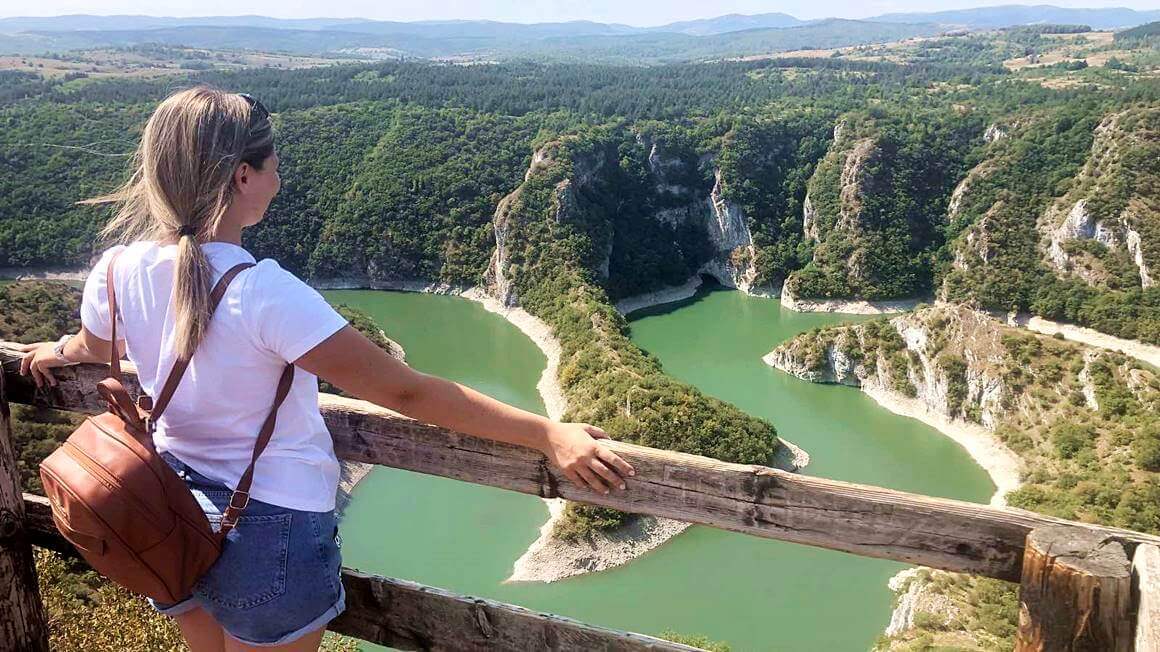
Photo: Katarina Komazec
There are several viewpoints, but Molitva (meaning “The Prayer”) is the most famous, and totally worth the bumpy ride. This famous viewpoint can be reached in 20-30 minutes hike, and there’s parking nearby.
If you’re not into hiking, you can take a boat tour on Uvac Lake, which usually includes a visit to the Ice Cave, only accessible by boat.
Both options give you different perspectives of the canyon, and honestly, it’s one of the most breathtaking spots in Serbia.
Serbian Orthodox Monasteries – Sanctuaries, Schools, and Symbols of Identity
Orthodox monasteries have always held a special place in Serbian history, not just as religious sites, but as true centers of life, education, and resistance.
During times of war, especially under Ottoman rule, monasteries were where people lived, studied, and kept their traditions alive. They were safe places where culture was preserved when everything else was falling apart.
Today, many of them are beautifully maintained complexes, and some even offer overnight stays in simple monastic rooms.
They are usually tucked away in forests, perched on hills, or hidden between river canyons, and visiting them truly feels like stepping into another time.
Serbs are traditionally religious people, and while not everyone goes to church every Sunday, Orthodox traditions still run deep, especially during major holidays and long fasting periods (yes, we have several during the year, and people take them pretty seriously, especially before Easter and Christmas).

Some monasteries are real national treasures. Studenica Monastery, a UNESCO World Heritage Site, is one of the most important and beautiful, with 12th-century frescoes that have somehow survived centuries of chaos.
Nearby, in the city of Kraljevo, there’s Žica Monastery, painted in its signature red and once the seat of the first Serbian archbishop.
Manasija Monastery looks like something from a fantasy film, with its fortified walls and rich medieval art. Every summer, Manasija Monastery hosts the Just Out Festival (Just Out Fest), a medieval-themed event with knights, traditional crafts, and music, bringing the spirit of Serbia’s past back to life for a weekend.
In central Serbia, the Ovcar-Kablar Gorge is often called the “Serbian Mount Athos” because of the many small monasteries scattered between cliffs and riverbanks.
In the north, Fruška Gora National Park is known not just for its nature and vineyards but also for its beautiful old monasteries. There are over a dozen scattered across the hills, and some of the most famous ones are Krušedol, with its peaceful courtyard and royal tombs, and Novo Hopovo, known for its impressive frescoes and calm atmosphere.
Many people from nearby Novi Sad and Belgrade visit these spots for day trips, to pray, light a candle, or just enjoy the quiet outside the bustling city.
Golubac, Derdap, and Lepenski Vir – Where History Meets the Danube
One of my favorite parts of Serbia lies to the east, following the flow of the Danube, just about two hours from Belgrade, where you can visit the stunning Golubac Fortress.
Golubac Fortress dates back to the medieval period and looks like something straight out of a fairytale, more castle than fortress. You can walk around it on land, but the best way to see it is from the river, since the fortress sits dramatically right on the edge of the Danube. You can book a boat tour and hear some of the local stories and legends tied to the fortress and this mystical part of Serbia.
Golubac is part of the Derdap National Park, the largest national park in Serbia, known for its breathtaking viewpoints and scenic hiking trails.

The whole area follows the Danube as it carves through the Iron Gates gorge, offering some of the most stunning natural landscapes in the country.
Not far from there is Lepenski Vir, one of the most fascinating prehistoric sites in Europe. It’s a 9,000-year-old archaeological site, with perfectly preserved remains of homes, tools, and those iconic fish-like stone sculptures. The museum is modern and built right over the original site, with views over the river that are just as impressive as the history.
If you’re visiting this area, the little town of Donji Milanovac is the best place to stay, quiet, right on the Danube, and close to everything, while Srebrno Jezero (Silver Lake), about 30 minutes from Golubac, is a great option if you’re more into chilling by the water after all the sightseeing.
Rtanj – Serbia’s Mysterious Mountain
Rtanj Mountain is the perfect choice if you’re not afraid of a little mystery and magic. Known for its perfect pyramid shape and strange legends, it’s a place where nature, folklore, and the “unexplained” all meet.
Whether or not you believe any of that, one thing’s for sure: the hike to the top is totally worth it. The trail is steep but doable, and once you reach the peak (1,565 m), you’ll be rewarded with some of the most panoramic views in central Serbia.You can stay in the nearby villages or spa town of Sokobanja, which makes a good base if you want to explore the area or just recover after the climb.
Zlatibor – Mountain Vibes, Family Fun, and a Bit of Everything
Zlatibor is one of those places Serbs either love or love to complain about – but we all go there anyway. It’s a mountain town that somehow mixes nature, tourism, and city vibes all in one.
The center is packed with restaurants, shops, music, and people, especially on weekends and holidays. But once you step outside the buzz, you’ll find rolling hills, fresh air, and quiet walking trails that remind you why people keep coming back.
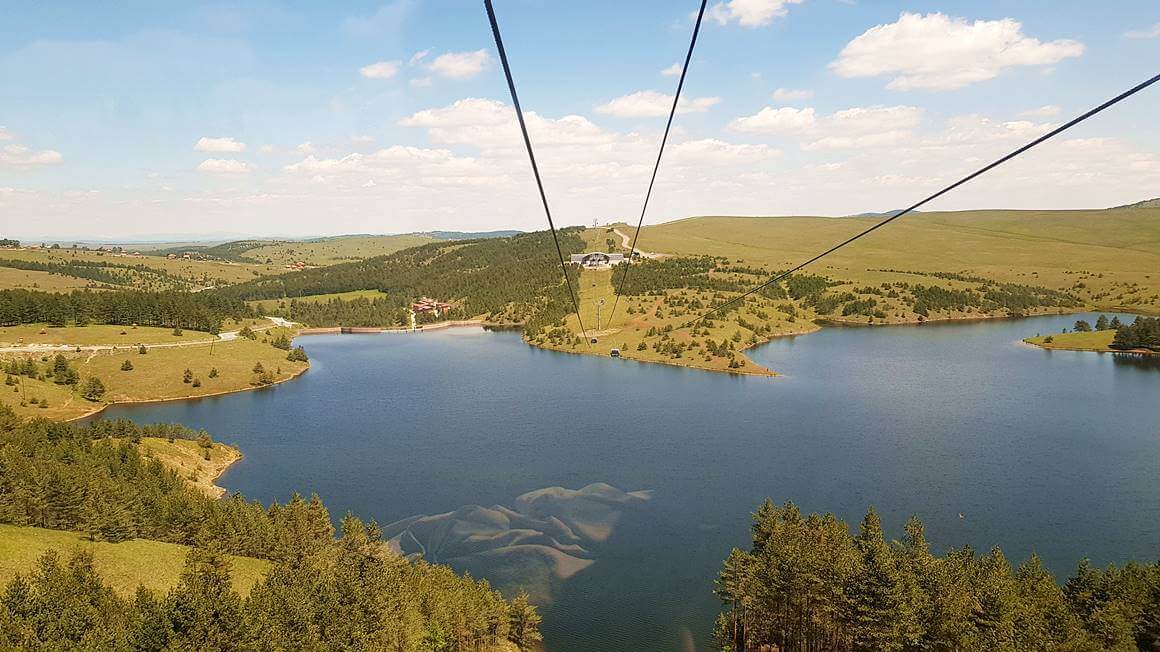
Photo: Katarina Komazec
One of the top attractions is the Zlatibor Gold Gondola, the longest panoramic gondola in the world, connecting the town center with Ribnicko Lake and the Tornik ski area. The ride takes about 30 minutes and offers amazing views over forests, meadows, and mountains.
Nearby, you can visit Stopica Cave, with its massive chambers and cascading tufa baths, or the open-air museum at Sirogojno, where traditional 19th-century Serbian mountain houses are still standing.
Subotica & Palic – Gems of the North
When visiting Subotica, you won’t have the feeling as if you were in Serbia. Tucked up in the north near the Hungarian border, this beautiful city has this European elegance you don’t really find anywhere else in the country.
The architecture is different and next-level, especially if you’re into Art Nouveau. The entire city is like an open-air museum with typical Art-Nouveau arhitecture that you can admire at city’s main attractions, like the City Hall, Synagogue, and Raichle Palace.
Just 10 minutes away is Palic, a small lakeside town where locals go to relax, bike, paddle boat, or take a slow walk along the promenade. It’s quiet, green, and perfect if you want to escape the city for a bit.
You’ll also find cute cafes, a small zoo, and in the summer, it gets lively with festivals and events. If you’re already exploring Vojvodina, Subotica and Palic are a refreshing detour from the usual Serbia experience.
Getting Off the Beaten Path in Serbia
If you really want to get to know Serbia, get off the beaten path. The real, raw Serbia is often in the small towns, forgotten villages, and winding backroads.
Head to places like Pirot for handmade kilims and strong local cheese, or explore eastern Serbia, a region full of untouched nature, remote monasteries, and people who’ll invite you in for coffee five minutes after meeting you.
Lakes like Vlasina, mountain villages near Stara Planina, or the wine cellars of Negotin offer a completely different pace.
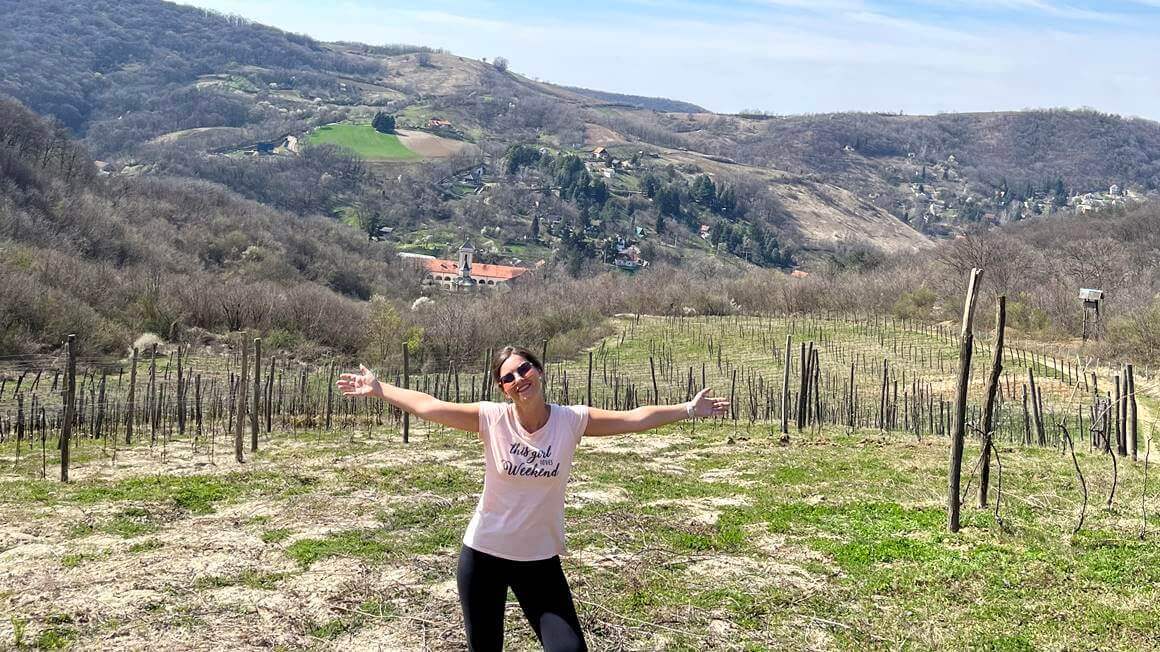
Photo: Katarina Komazec
This part of the country is also rich in Roman heritage, with ruins like Mediana near Niš and Felix Romuliana near Zajecar, a UNESCO-listed site that feels like something out of a history documentary, but with zero crowds.
You’ll stumble upon forgotten fortresses like Soko Grad, Maglic, or Bac Fortress, each with epic views and centuries of stories behind them.
And if you love wine, Serbia has several wine regions, including Topola, Sremski Karlovci, and the lesser-known Timok Valley, where local winemakers still use traditional methods and the wine flows freely.
These aren’t places with big tours or glossy brochures, but that’s kind of the point. It’s just raw, honest Serbia, and that’s where the best stories happen.
Top Things to Do in Serbia
From a lifetime of living here 🙂
1. Eat Your Way Through a Kafana
You haven’t really experienced Serbia until you’ve been to a real Serbian kafana, and I mean real. Not the trendy, polished ones in downtown Belgrade, but the ones in smaller towns and villages, where only locals go.
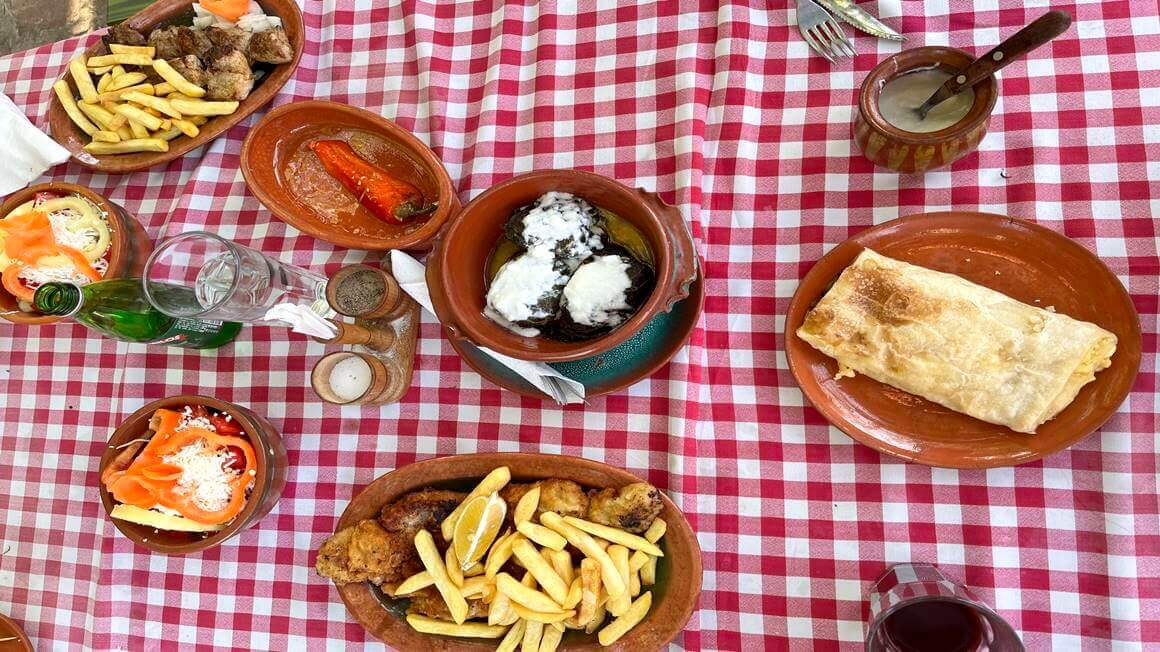
Photo: Katarina Komazec
Be ready for smoke, loud chatter, laughter, turbo-folk music, maybe a few drunk uncles at the next table, and massive plates of grilled meat, always with ajvar and rakija on the side.
It’s chaotic, it’s loud, it’s authentic, and it’ll definitely be one of the strongest impressions you’ll take from your trip.
2. Get Lost in a Local Market
Just like anywhere else, local markets are where you really feel the soul of a place, with vendors calling out to each other, bargaining, laughing, and proudly showing off their homemade goods.
Visit Kalenic Market in Belgrade or any town’s main market, and try some local rakija, ajvar, kajmak, cheese, or honey.
Everything is homemade, fresh, and full of flavor, though keep in mind, prices aren’t always cheaper than in supermarkets, but the quality is on a whole different level.
3. Hike to a Viewpoint
As someone who’s absolutely obsessed with viewpoints, I definitely recommend checking out some of Serbia’s most stunning lookouts.
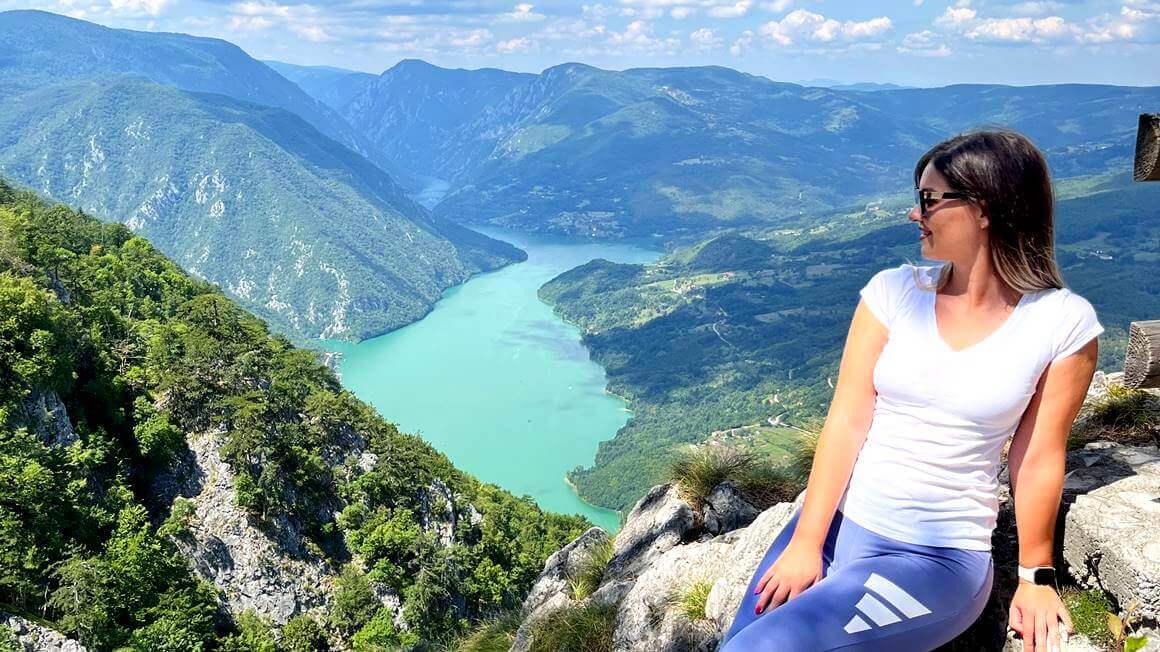
Banjska Stena in Tara, Uvac Canyon, and the peak of Rtanj Mountain are among the most famous, and for good reason.
If you’re staying closer to Belgrade, head to Avala, where you can climb the iconic Avala Tower and take in panoramic views of the city and its surroundings. It’s a great little escape even for beginner hikers.
4. Go Rakija Tasting with Locals
Okay, I don’t want to go overboard with rakija talk, but the truth is, rakija is kind of a national ritual here. It’s not just a drink, it’s part of everyday life.
People have it before breakfast, when they have a sore throat, when you arrive, when you leave, and always with some story or toast in the mix.

Photo: Katarina Komazec
It’s also a great way to bond with locals, especially if you’re shy; after one or two shots, the conversation flows a lot easier.
Rakija is a strong fruit brandy, usually homemade, with alcohol content around 40–45%, though believe me, it often feels stronger. So go easy, and whatever you do, make sure you eat something with it.
5. Spend a Day at a Spa
It’s true, Serbia doesn’t have a sea, but what it does have is a whole lot of thermal springs, mineral-rich mud, and spa towns (“banja” or ”banje” in plural) that locals absolutely swear by.
There are several well-known ones I’d recommend, like Sokobanja, Vrnjacka Banja, and Prolom Banja, all well-developed for tourism.
One that’s especially close to my heart is Banja Vrujci, where my parents live and rent out apartments. It’s only about an hour from Belgrade, making it the closest spa town to the capital.

Photo: Katarina Komazec
The place is known for its healing mud, high-quality mineral water, and pools where you can actually swim in it.
“Banje” are super popular, especially in the summer, but even year-round you’ll find plenty of locals soaking, relaxing, and fully embracing the slow pace of spa life.
6. Try Some Extreme Sports
If you’re into adrenaline and adventure, Serbia has plenty to offer, like paragliding over the stunning Ovcar-Kablar Gorge, ziplining in Zlatibor, or rafting on the Drina and Tara rivers.
Personally, I’m not a fan of extreme sports (they freak me out), but rafting is still on my bucket list.
The problem is, my friends are not exactly the adventurous type, so I’m just waiting to see who’ll be brave enough to join me. If you decide to go, let me know, and we’ll go together! It’s way more fun with a group anyway.
7. Join a Village Festival
If you’re in Serbia during the summer, don’t miss the chance to join a village festival, because small towns here really know how to party!
These events are usually a mix of traditional music, colorful costumes, home-cooked food, and dancing that goes late into the night.

Photo: Katarina Komazec
From the Guca Trumpet Festival, where the whole town turns into one big brass concert, to Days of Šljivovica (plum rakija) in Osecina, or the Ajvar Festival in Leskovac, there’s something happening almost every weekend.
It’s loud, it’s fun, and you’ll leave full: both of food and stories to tell for the next ten years.
8. Go to a Music Festival
Serbia loves a good festival, and no matter when you visit, there’s probably something going on. The biggest name is the EXIT Festival in Novi Sad, held inside the Petrovaradin Fortress, with massive stages, river views, and music all night long.
The Guca Trumpet Festival is also super popular; it’s wild, chaotic, and full of energy. I had the chance to visit once, and while it’s not exactly my type of festival, I’ll admit – it was fun, loud, and packed with a lot of very drunk people, so just be prepared for that.
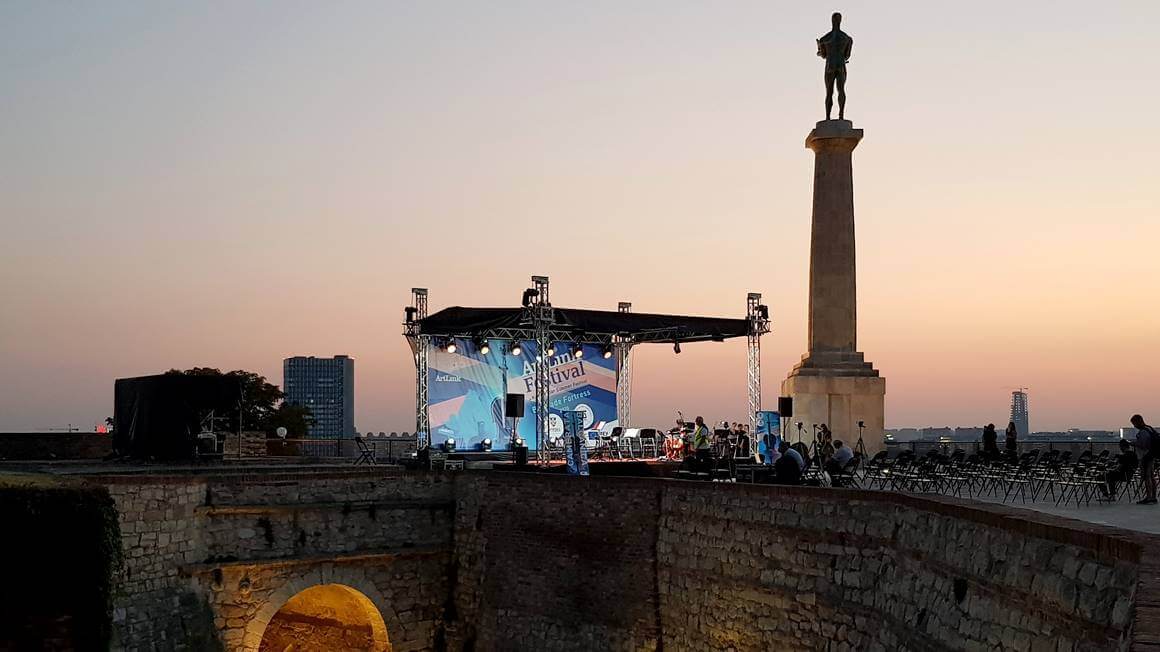
Even though it wasn’t my scene, we definitely spent the next ten days laughing and retelling stories from that weekend. It’s one of those once-in-a-lifetime kind of experiences.
There are also smaller, local festivals like the Rakijada in Pranjani, Ajvar Festival in Leskovac, or even the Roštiljijada (Grill Fest) in Leskovac, which is basically heaven for meat lovers. Whatever your vibe – music, food, or folklore, there’s a festival for it here.
9. Explore a Fortress
I’m absolutely obsessed with fortresses and viewpoints, so I’d definitely recommend visiting at least a few while you’re in Serbia.
Of course, Kalemegdan in Belgrade is number one, but there’s so much more beyond that.
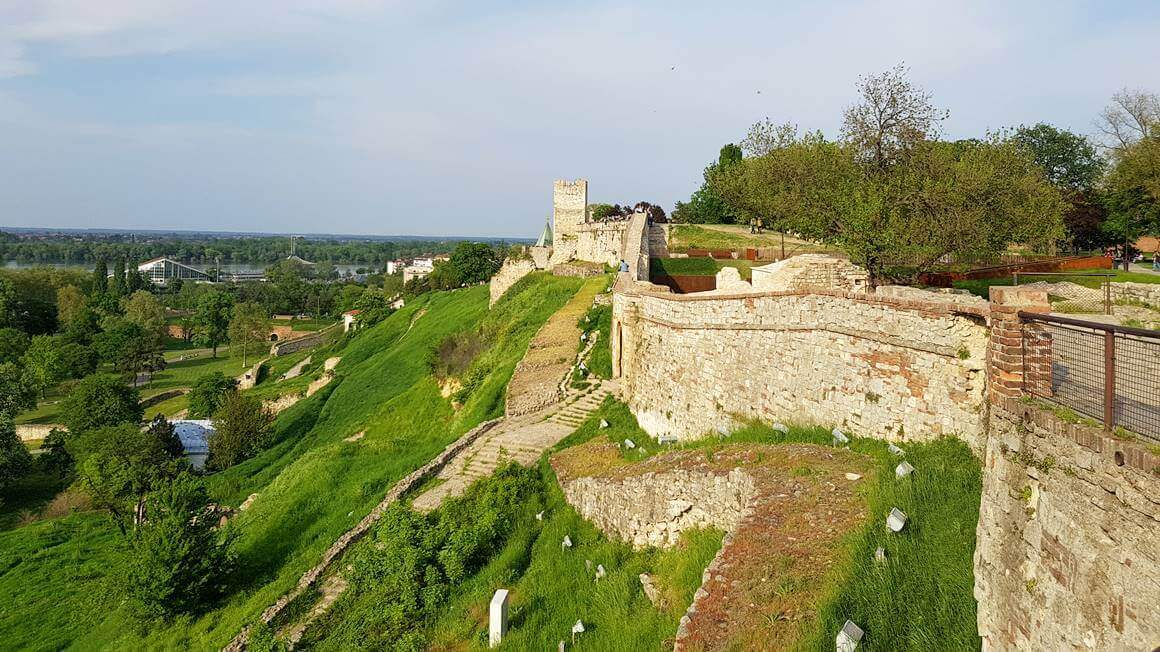
Golubac Fortress, rising above the mighty Danube, is a must, but don’t skip the lesser-known, equally impressive ones like Soko Grad near Sokobanja or Maglic, perched above the Ibar River.
There are a few other river fortresses, strategically built to guard the Danube, like the massive Smederevo Fortress, Petrovaradin in Novi Sad, or Bac Fortress, one of the oldest in the country.
10. Go Monastery Hopping
I’ve already mentioned how important monasteries are to the Serbian people, not just spiritually, but historically and culturally.
Studenica is a UNESCO World Heritage Site and absolute must-sees if you’re even remotely interested in history or stunning architecture.
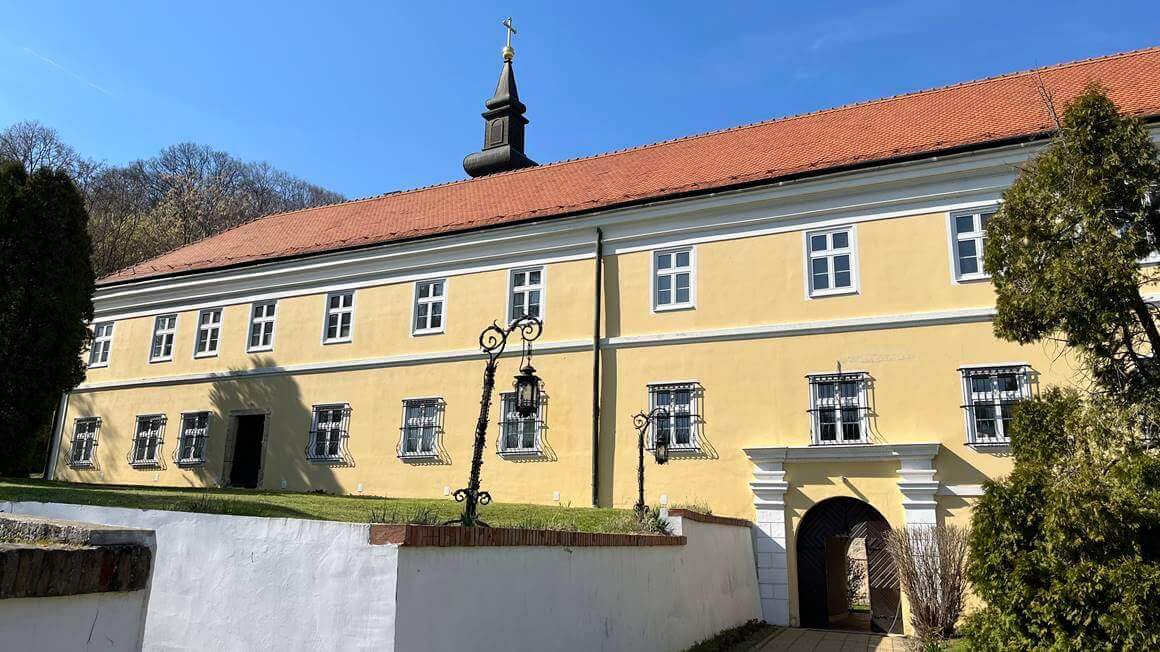
My personal favorite, though, is Manasija Monastery, partly because it looks like a fortress, with massive stone walls surrounding the church in the middle. It really feels like stepping into medieval time.
The monasteries on Fruška Gora are also a popular choice, especially since they’re so close to Belgrade. To be honest, they’re not as visually impressive as the ones I mentioned above, but each one has its own story, and many of them sell homemade products made by the monks, which adds a nice personal touch to the visit.
Backpacking in Serbia
Backpacking through Serbia is a pleasant surprise for anyone used to the typical Western Europe routes.
Of course, things aren’t perfectly organized, and trains don’t run every 15 minutes, but what you do get is locals who’ll go out of their way to help you, food you’ll dream about long after you leave, and nature that takes your breath away.
What I really love is that it’s still off the beaten path. You can stroll down cobbled streets, share a rakija with locals in a smoky kafana, or get completely lost in the mountains, and you’ll likely be the only tourist around.
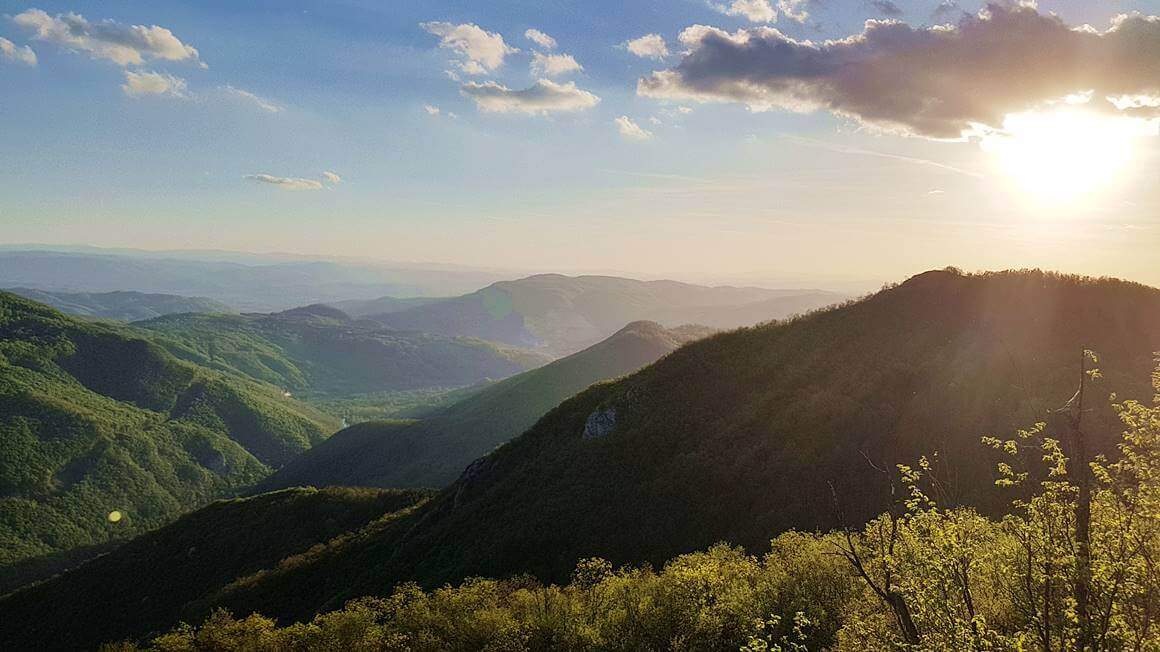
Photo: Katarina Komazec
Prices are still very backpacker-friendly, especially if you stay in hostels, take local buses, and eat like we do – bakeries, grill joints, or budget restaurants (you can get a plate of cevapi for $5-10).
Backpacking here is all about being spontaneous, keeping your expectations low, and letting the trip unfold naturally.
Backpacking Accommodation in Serbia
Hostels in Serbia are mostly found in bigger cities like Belgrade, Novi Sad, and Niš. Some are super social and fun (great if you want to meet people), and others are quieter and more relaxed.
Prices for a dorm bed range from $10 to $30, and most hostels include Wi-Fi, lockers, and a common area.
In smaller towns or nature spots like Zlatibor, Tara, or Sokobanja, you’re more likely to find guesthouses, wooden cabins or private rooms, which are often affordable..
Wild camping is technically allowed in national parks (with common sense), and you’ll also find eco-campsites and mountain huts in more remote areas.
Backpacking Costs in Serbia
Backpacking in Serbia is really affordable, especially compared to Western Europe. If you’re smart about it, you can easily get by on $40–50 USD per day, sometimes even less.
Here’s a rough breakdown:
- Entry to most attractions: $0–5 (many are free)
- Dorm bed in a hostel: $10-30
- Private apartment or guesthouse: starting from $40
- Burek + yogurt (classic breakfast): under $4
- Street food or local fast food: $5–10
- Sit-down kafana meal with a drink: $10–20
- Coffee: $2-3
- Bus rides between cities: $5–25 (public transport is free in Belgrade)
Bakeries are everywhere and perfect for cheap snacks. Tap water is drinkable. And if a local invites you for lunch: say yes! It’s a part of the authentic Serbian experience.
Money in Serbia
Serbia uses the Serbian dinar (RSD), and you’ll definitely need some cash on you, especially in smaller towns, markets, or when taking buses.
Bigger cities, supermarkets, and restaurants usually accept cards, but don’t count on it everywhere. ATMs are easy to find, and exchange offices (“menjacnica”) offer decent rates, often better than banks. Just avoid changing money at airports, it’s the worst deal.
As of now, $1 USD is roughly 100-105 RSD, but rates change, so double-check before your trip. Euros may be accepted for payments in some local shops, but department stores and most business don’t take euros. So, dinars only, please.
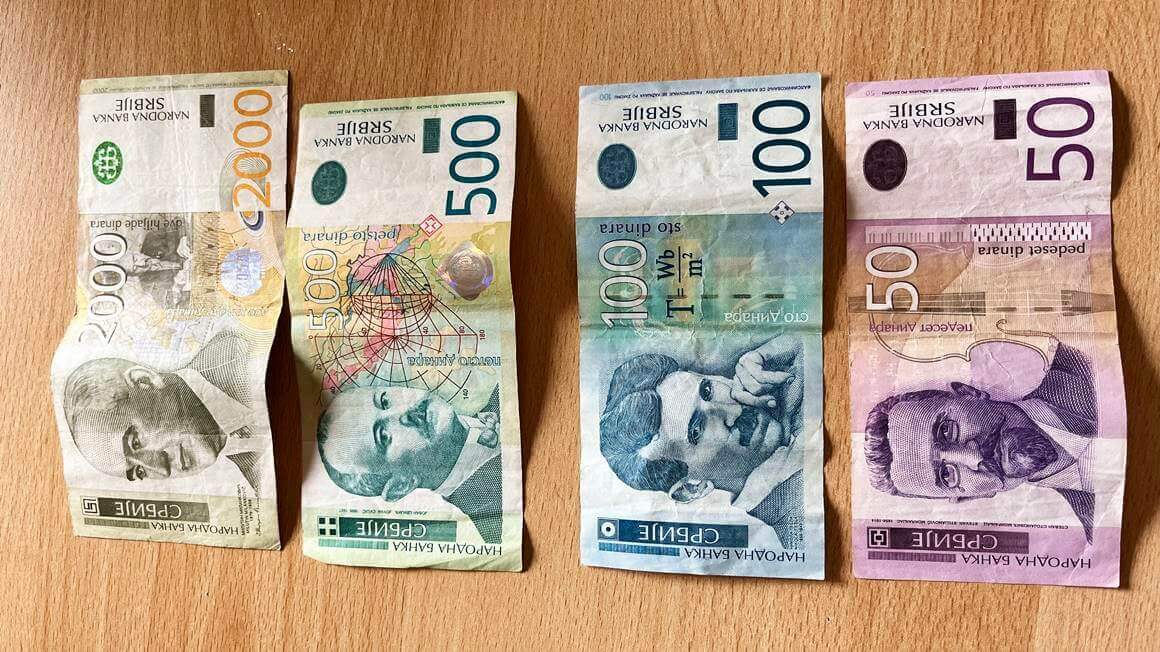
Travel Tips – Serbia on a Budget
- Even though prices in Serbia have gone up like crazy in the past few years, you can still travel on a budget if you know how to save smart.
- To start with, fast food joints, bakeries, and traditional kafanhosas that aren’t in the tourist zones still offer great food at very fair prices.
- In Belgrade, city buses are now free, and intercity buses are frequent, affordable, and mostly on time.
- Budget accommodation is easy to find, especially outside of city centers or in smaller towns, but even in central Belgrade or Novi Sad, you can still grab a hostel bed for around $10 a night.
- If you’re planning a longer stay, your best bet is to rent a flat in a smaller town or outside the city center.
- Locals are generally very open and friendly, so don’t be surprised if someone offers you a place to stay, or at least a homemade meal.
- With a bit of research and a flexible attitude, you can travel around Serbia without spending a fortune, and still not miss out on any of the good stuff.
The Best Places to Stay in Serbia
Serbia really offers a wide range of accommodation options, no matter your travel style or budget. From cozy guesthouses and mountain cabins to modern city apartments and boutique hotels, you’ll find something that works for you.
Here are a few suggestions by city, based on my own experience and local tips:
Belgrade
Hotels in central Belgrade are mostly located in the Savski Venac and Stari Grad municipalities, basically, you’ll be right in the heart of the city.
Prices usually start around $50 per night and go up from there, depending on the season and the level of comfort.
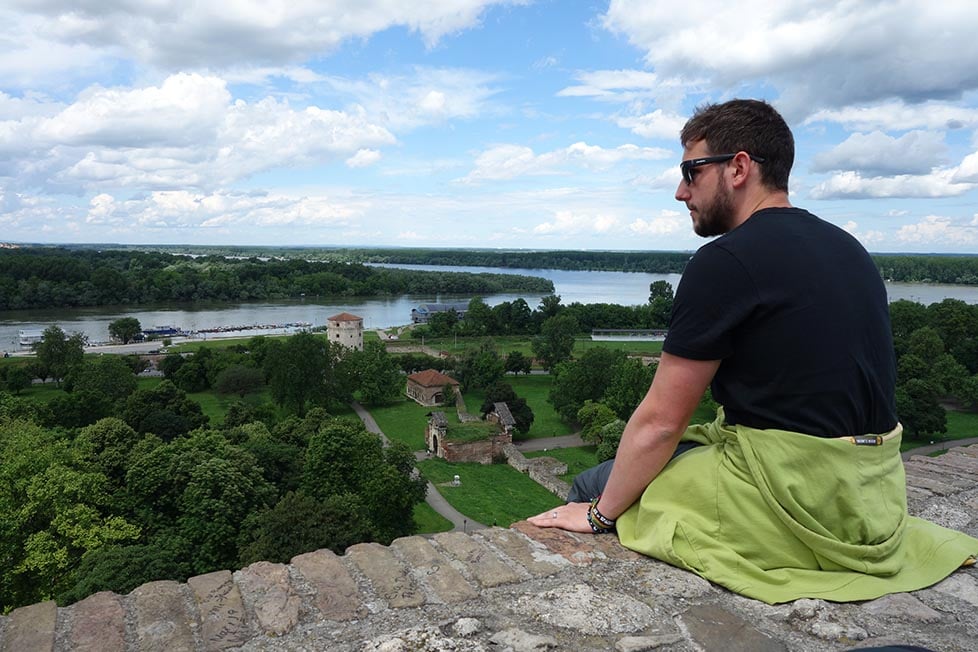
Image: Nic Hilditch-Short
Some of the top-rated hotels include Amsterdam Hotel, Metropol Palace, Saint Ten, Hotel Opera Garni, Hotel City Savoy, Hotel Balkan, and others. If you prefer outside the city center, consider booking your stay in Hyatt Regency, MARK Hotel, IN Hotel Beograd, Balkan Hotel Garni or Falkensteiner Hotel.
Hostel prices start at $10 per night and popular choices include ArkaBarka Floating Hostel, Balkan Soul Hostel, Hostel Karavan Inn, Good People Design Hostel and Up Hostel.
Novi Sad
In Novi Sad, you won’t have any trouble finding a place to stay that fits your budget. Just like in Belgrade, there’s a wide range of hotels, hostels, and private apartments, and prices are generally a bit more budget-friendly than in the capital.
Popular hotels include Garni Hotel Centar, Arhiv Boutique House, Hotel Pupin, Sheraton Hotel, Hotel Fontana and Hotel Leopold I in Petrovaradin Fortress.
As for hostels, Hostel Sova, A&A, and Passenger Hostel are worth checking out.
Niš
In Niš, you’ll find plenty of great (and very affordable) places to stay.
I personally stayed at the Ambasador Hotel, and I can honestly say it’s one of the best options in town. The location is perfect, right in the center, the rooms are modern and spacious, and the views from the upper floors are amazing.
Other hotels worth taking a look include New City Hotel, Hotel Crystal Light, Garni Hotel Consul, and Center Deluxe Garni Hotel.
For budget travelers, Hostel Bloom Inn is popular for its friendly atmosphere and clean rooms.
There are also tons of apartments in the city center if you prefer more privacy and flexibility, great for longer stays or if you want to cook your own meals.
Zlatibor
You’ll find a wide range of accommodation in Zlatibor, mostly luxury and boutique hotels, guesthouses, wooden cabins, and private apartments.
The center can be a bit chaotic, especially on weekends and holidays, so if you’re after peace and quiet, I’d definitely recommend staying a bit outside the main town.
Popular hotels: Hotel Agape, Vila Borova Wellness & Spa Resort, Bor Hotel by Karisma, All Seasons Residence, Zlatiborske Terase Spa & Wellness, Hotel Buket
Hostels aren’t very common in Zlatibor, but the good news is that for a relatively small amount of money (starting around $30-40 per night), you can rent a private apartment or stay in a cozy guesthouse.
Kopaonik
Kopaonik isn’t a cheap destination, but depending on where you stay, it can be more affordable or more expensive. There are options for every budget, you just need to plan ahead and choose wisely.
Popular hotels include Hotel Viceroy Kopaonik, Gorski Hotel & Spa, Hotel Grand Kopaonik, Grey Hotel Kopaonik, Srebrna Planina Spa Resort and Hotel Djina
Both private apartments and hotels can be found starting from around $40 per night.
Best Time to Travel to Serbia
Serbia is a destination you can visit year-round, depending on the type of trip you want and what you’re hoping to experience.
In the past few years, summers, especially July and August, have been extremely hot, and personally, I wouldn’t recommend visiting during that time. However, traveling to Serbia in summer does have one advantage: cities are almost empty, since everyone heads off on vacation.
I’d say the best time to explore Serbia is April-May-June and September-October, when the weather is generally pleasant. The only downside is the rain which can sometimes mess with your plans during those months.

Photo: Katarina Komazec
If you’re coming for skiing or winter activities in Kopaonik or Zlatibor, December through February is your window.
And if you’re after that cozy holiday atmosphere, keep in mind that Serbia follows the Julian calendar for religious holidays, which is why we celebrate Orthodox Christmas on January 7th. It’s a special time to experience traditional customs, festive meals, and that warm Serbian holiday spirit.
What to Pack for Serbia
When it comes to packing, speaking as someone who travels a lot myself: go light. For shorter trips, I always recommend a carry-on or small suitcase.
And like most Europe packing lists, comfortable sneakers or walking shoes are a must, since exploring in Serbia almost always involves a lot of walking, and even more so if you’re planning to do any hiking.
In the spring and summer, pack a cap, sunglasses, light and breathable clothes, a daypack, and definitely a refillable water bottle, as tap water is safe to drink almost everywhere.
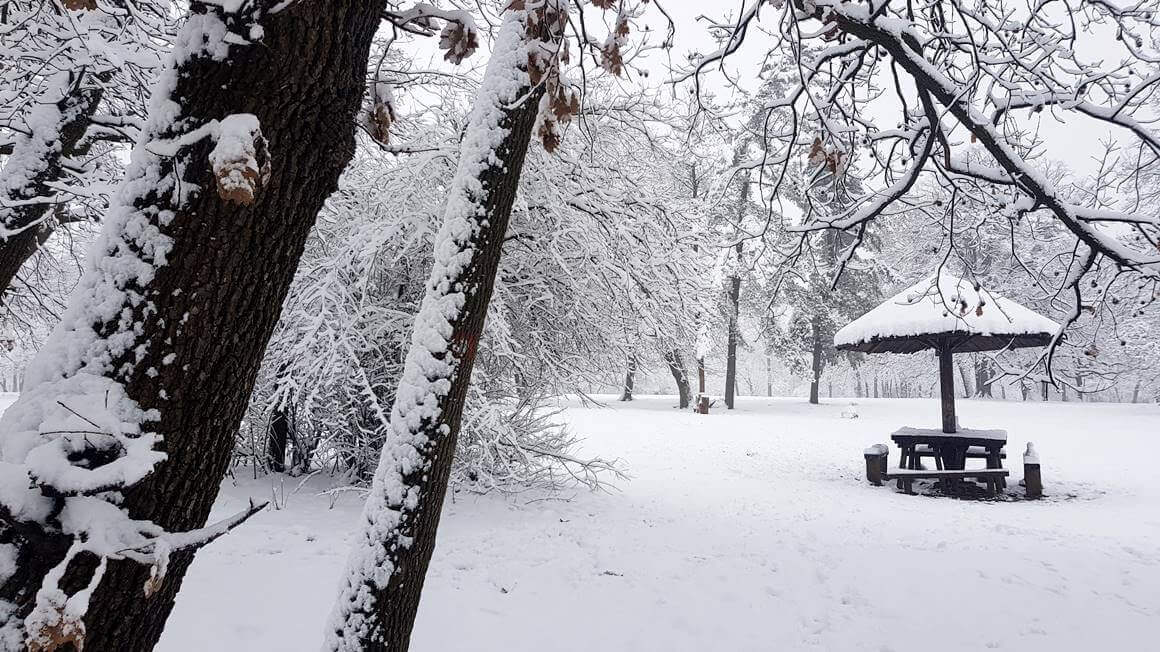
For winter travel, you’ll need a warm jacket, waterproof boots, a raincoat or a solid winter coat, especially if you’re heading to the mountains.
And don’t forget a swimsuit. Whether you’re planning to visit a spa or take a dip in one of Serbia’s thermal springs, it always comes in handy.
Travel Security Belt
This is a regular looking belt with a concealed pocket on the inside – you can hide up to twenty notes inside and wear it through airport scanners without it setting them off.
Microfiber Towel
Hostel towels are scummy and take forever to dry. Microfibre towels dry quickly, are compact, lightweight, and can be used as a blanket or yoga mat if need be.
Petzl Actik Core Headlamp
A decent head torch could save your life. If you want to explore caves, unlit temples, or simply find your way to the bathroom during a blackout, a headtorch is a must.
‘Monopoly Deal’
Forget about Poker! Monopoly Deal is the single best travel card game that we have ever played. Works with 2-5 players and guarantees happy days.
Hanging Laundry Bag
Trust us, this is an absolute game changer. Super compact, a hanging mesh laundry bag stops your dirty clothes from stinking, you don’t know how much you need one of these… so just get it, thank us later.
Staying Safe in Serbia
Serbia is generally a safe country to travel to, even for solo travelers and backpackers.
Most visits go smoothly, however, use common sense and keep an eye on your stuff in crowded areas, watch your drink at clubs or festivals, and avoid showing off valuables.
Locals are friendly, curious, and often eager to help, sometimes even a little too much (my dad, for example, always finds it hard to say no, so we’ve ended up with strangers at their family lunch more than once)
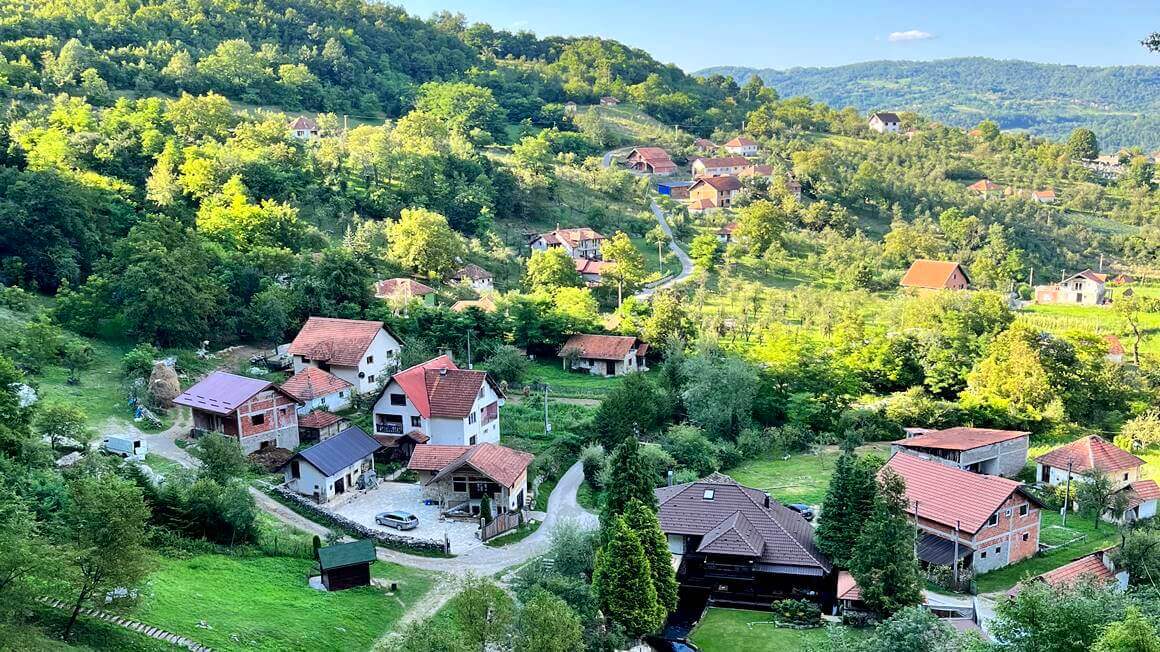
Photo: Katarina Komazec
I once read somewhere that Belgrade is the safest city in Europe. I’m not sure if that’s true or not, but as someone who spent my high school and university years in the city center, I can say that back then, about 15 years ago, it really did feel very safe.
Today, with the arrival of more migrants and a large number of people moving into the city, Belgrade isn’t quite as safe at night as it used to be, so it’s good to stay aware and cautious, especially after dark.
That said, other cities like Niš and Novi Sad still feel pretty safe at night, and I personally never had any issues walking around.
Public transport is generally safe, even at night, just stay aware of your surroundings, like you would anywhere.
When it comes to rural parts of Serbia, they’re generally very safe, and people are usually friendly and willing to help. Just make sure to keep your phone charged and bring a power bank. Signal can be weak in remote areas, and it’s always good to be prepared.
Sex, Drugs, and Rock ‘n’ Roll in Serbia
Serbia, and especially Belgrade, is known as one of the top party destinations in Europe, and honestly, it lives up to the hype.
It’s partly because there’s something for everyone, from river clubs and underground bars to live folk music in old-school kafanas, but also because of the Serbian mentality.
People here genuinely love to go out, dance, sing, and just have a good time. Partying isn’t just something we do, it’s kind of a lifestyle, even when it’s tough.
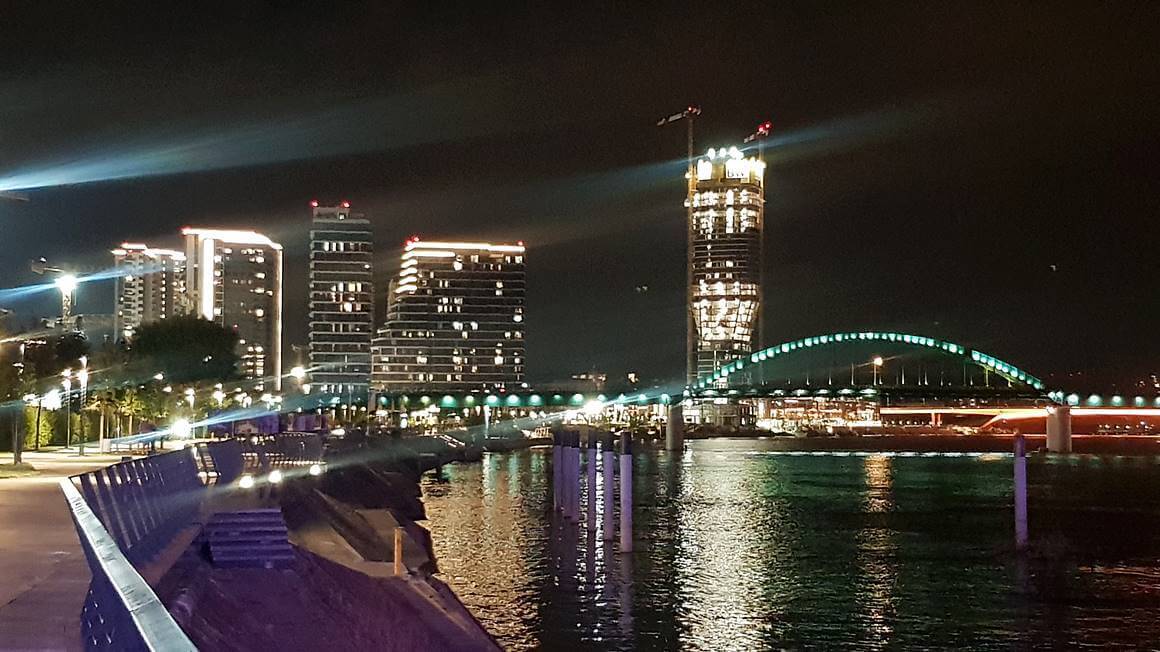
Photo: Katarina Komazec
When it comes to sex and dating, the culture is pretty open-minded, especially in the cities. Tinder works here, and Serbs are known for being flirty, confident, and direct, at least in conversation.
But fun fact: guys aren’t actually that bold in real life, and they rarely approach girls out of the blue, especially in public. So if you’re expecting a non-stop flirt-fest, it might not be as forward as you think.
Drugs are officially illegal, of course, but like anywhere, they exist in the club scene. Just know that police don’t take it lightly, and possession can land you in serious trouble. Stick to rakija and loud music, and you’ll have plenty of fun without the risk.
Getting Insured Before Visiting Serbia
Serbia is safe and pretty affordable, but still, don’t skip travel insurance.
Accidents happen, especially if you’re planning to hike, ski, or do anything mildly adventurous. And keep in mind, road infrastructure in less developed parts of Serbia can be rough, with narrow, bumpy roads and the occasional surprise pothole, so it’s better to be covered, just in case.
Medical care here is decent, but make sure to have an insurance to avoid potentially expensive costs.
If you’re from the UK, the GHIC card gets you access to emergency care, but it’s not a full replacement for proper travel insurance.
There are plenty of cheap and easy options online, and honestly, it’s a small price to pay for peace of mind.
ALWAYS sort out your backpacker insurance before your trip. There’s plenty to choose from in that department, but a good place to start is Safety Wing.
They offer month-to-month payments, no lock-in contracts, and require absolutely no itineraries: that’s the exact kind of insurance long-term travellers and digital nomads need.
SafetyWing is cheap, easy, and admin-free: just sign up lickety-split so you can get back to it!
Click the button below to learn more about SafetyWing’s setup or read our insider review for the full tasty scoop.
How to Get Into Serbia
Getting into Serbia is pretty straightforward.
If you’re from the USA, UK, EU, Canada, or Australia, you can enter visa-free and stay for up to 90 days within 6 months. No visa, no fees, just bring a valid passport.
Flights into Belgrade are the most common, but you’ll also find seasonal or budget-friendly options into Niš and even Kraljevo (although this is less common option).
Belgrade’s “Nikola Tesla Airport” has been recently expanded and fully modernized, and it’s now better than ever. It serves a growing number of international flights, with great connections to major European cities, so getting in and out of Serbia has never been easier.
If you’re traveling overland, you can cross the border by bus, car, or train from all neighboring countries: Bosnia, Montenegro, North Macedonia, Romania, Bulgaria, and Hungary. The borders are usually quick and painless (unless you hit them during holiday traffic or July/August – then, good luck).
Serbia isn’t in the EU or Schengen Zone, which is actually great if you’re trying to reset your Schengen visa days while traveling long-term around Europe.
Entry Requirements for Serbia
If you’re from the USA, UK, EU, Canada, or Australia, you’re good to go, no visa required for tourist stays of up to 90 days. Your passport just needs to be valid for at least 90 days beyond your stay.
If you’re from a country that does need a visa, having a valid Schengen, US, or UK visa or residence permit can get you in visa-free, too (as long as it’s still valid while you’re here).
At the border, they might ask you for proof of accommodation, return ticket, or enough cash, though they rarely check.
Health insurance isn’t mandatory, but it’s definitely smart to have it.
That’s it: passport, backpack, maybe a few printed documents, and you’re good to go!
How to Get Around Serbia
Getting around Serbia is generally easy once you get the hang of it, but don’t expect everything to run like clockwork: this is the Balkans, after all.
Cities are well-connected, but once you’re off the beaten path, you’ll need a bit more patience. Here’s how to move around:
Traveling by Car
If you really want to explore Serbia freely, renting a car is your best bet.
The main highways (“autoput” in Serbian) are in solid condition and easy to drive, but once you get off those routes, things get a bit rough. Rural roads can be narrow, bumpy, and full of surprises like tractors or sudden potholes, so take it slow.
Serbia’s primary highways include:

- A1 (E75): Runs north to south, connecting Subotica (Hungarian border) through Novi Sad, Belgrade, and Niš, down to the North Macedonian border. This is Serbia’s main artery and the smoothest route in the country.
- A3 (E70): Links Belgrade to the Croatian border, heading west through Šid.
- A2 (E763): also known as the “Miloš Veliki” highway: This newer route starts in Belgrade and stretches southward through Obrenovac, Cacak, and Požega, with plans to extend to the Montenegrin border.
Toll roads are common on highways, but tolls are relatively cheap, just keep some cash or a card ready. Fuel stations are easy to find, and most accept cards.
Driving is on the right side, and signage is pretty clear (though don’t rely too much on Google Maps in rural areas, as it loves sending people down random gravel tracks).
Just note: parking in cities like Belgrade and Novi Sad can be a nightmare, so check ahead if your accommodation offers parking.
Traveling by Bus
Buses are the most popular way to get around Serbia, especially between cities and towns.
They’re affordable, frequent, and surprisingly reliable, though not always the most modern. Major hubs like Belgrade, Novi Sad, Niš, and Kragujevac are well-connected, and even smaller towns usually have at least a few daily departures.
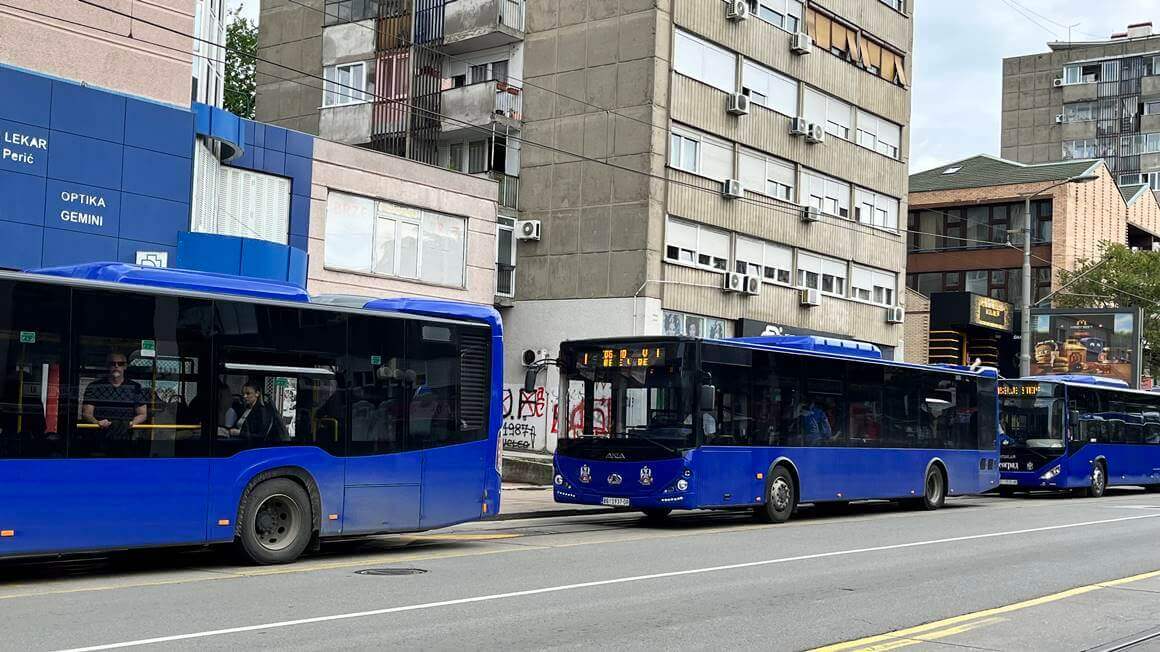
Photo: Katarina Komazec
You can buy tickets at the station or directly from the driver, but for long-distance routes, it’s best to grab one in advance. Just don’t expect luxury; actually, traveling in Serbia by bus can turn out to be quite an adventure!
The rest of the network is a totally different story. I’ve only used the train a few times in my life, and the last time was just last year: a trip from Belgrade to the city of Užice, which should take around 2 hours by car, ended up taking almost 4 hours by train. The rails are old, the trains are slow, and delays are pretty common.
Traveling by Train
Serbian trains are definitely not known for their speed. The one major exception is the shiny new Soko fast train between Belgrade and Novi Sad, which takes just 30 minutes and is super clean, comfy, and modern.
So, if you’re not in a hurry and just want to enjoy the views, it can still be a fun and nostalgic experience to experience train travel during your trip. Tickets are cheap, and you’ll see parts of the countryside you wouldn’t catch from the highway.
Just don’t expect clear signs or English-speaking staff: stations can be confusing, so it’s totally normal to ask around or follow the locals.
Rideshares and Taxis
Taxis in Serbia can be a convenient way to get around, but it’s good to know a few things before hopping in.
In Belgrade, official taxis are now white-colored and easy to spot, but they’re not cheap anymore, especially for short city rides. In smaller towns, though, taxis are still very affordable by Western standards.
Always make sure to use registered taxis or order through an app like Yandex or CarGo (our local version of Uber). They’re more reliable, and you’ll avoid the classic “tourist pricing.”

Photo: Katarina Komazec
Whatever you do, don’t grab a random taxi parked at the train or bus station, as they’re notorious for overcharging foreigners.
I personally always call a taxi service, and it’s the safest way to go. In Belgrade, reliable companies like Pink Taxi, Naxis, and Beo Taxi are easy to reach; just Google their numbers, and you’ll usually have a car at your location in 5 minutes or less. Most operators speak basic English, and the cars are metered and legit, so there’s no price negotiation.
If you’re feeling flexible, BlaBlaCar is another great option for getting between cities. It’s safe, cheap, and a cool way to chat with locals, though be warned, you might be stuck listening to Serbian turbo-folk at full blast for the entire ride. Consider it part of the cultural experience.
Onwards Travel from Serbia
Serbia is in a great spot if you’re planning to continue traveling through the Balkans or Europe.
There are regular buses (and some trains, although I don’t recommend this option) heading out to neighboring countries like Bosnia & Herzegovina, Montenegro, North Macedonia, Romania, Bulgaria, and Croatia, and it’s easy to reach places like Budapest, Zagreb, or Skopje in between 5 to 8 hours.
For longer trips, regular bus lines run to many major European cities, especially where there’s a strong Serbian diaspora.
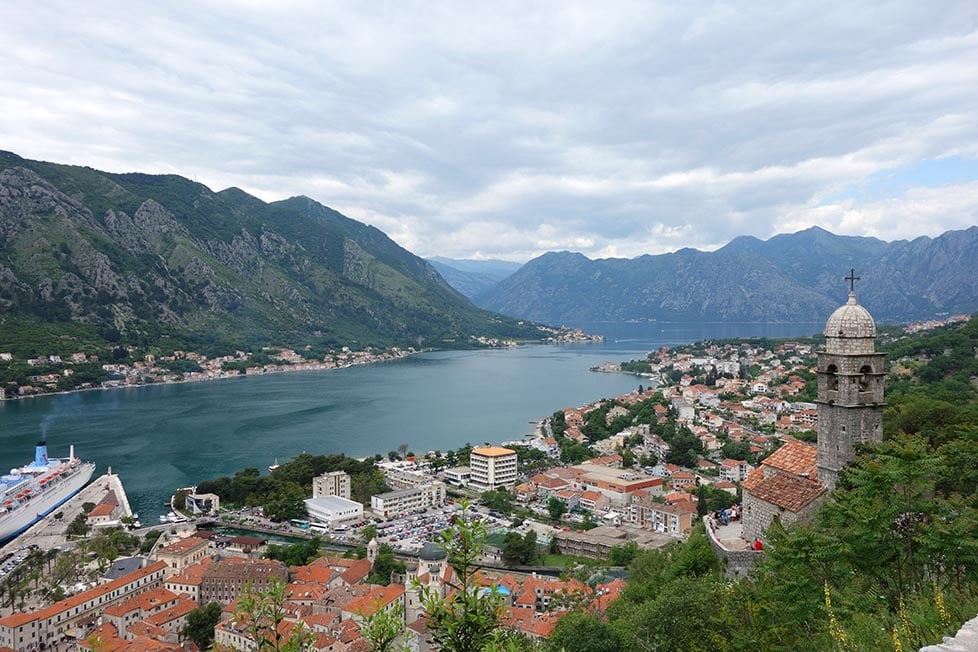
Image: Nic Hilditch-Short
You’ll find daily or weekly departures to cities in Germany (like Munich, Stuttgart, Frankfurt), Austria (Vienna, Salzburg), and France (Paris, Lyon). These are usually operated by private companies, and while the rides are long, they’re often cheap and reliable.
FlixBus has also become a popular option in recent years, with affordable connections from Belgrade and Novi Sad to tons of European cities. It’s comfy, has Wi-Fi, and is easy to book online.
Flights from Belgrade “Nikola Tesla Airport” also make it easy to hop over to major European cities if you’re heading further out. Low-cost airlines fly to places like London, Vienna, Berlin, Milan, Paris, Lisbon, Istanbul and Rome daily.
If you’re traveling by car, border crossings are usually smooth, but do check visa and entry requirements for non-EU travelers, as Serbia is not in the Schengen Zone.
Serbia’s Culture
Serbian culture is a classic blend of East and West. In terms of mindset and behavior, Serbs often remind people of southern Europeans, like Spanish, Italians, or Greeks. We are warm, loud, emotional, and very social.
But especially in the south of the country, you’ll also notice a strong Turkish influence, from the food to the language and daily habits.
In contrast, Serbs from Vojvodina, in the north, are known for their slower pace of life, more laid-back attitude, and a “no rush” approach to everything. Meanwhile, in central and southern Serbia, people tend to be more energetic, direct, and impulsive.
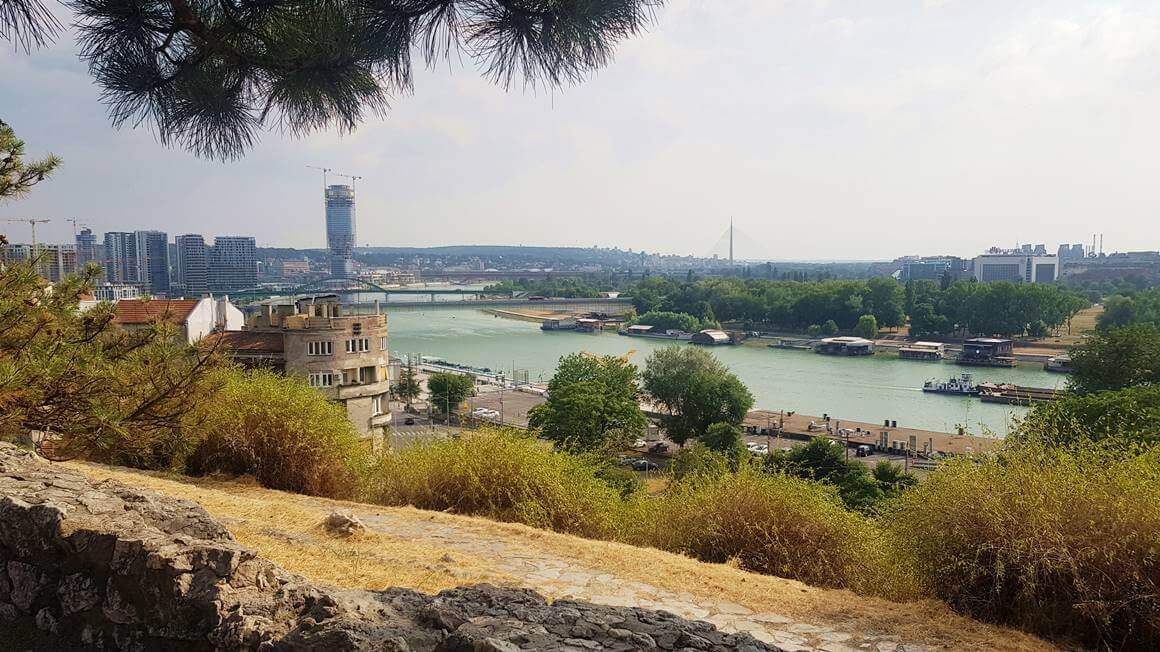
Photo: Katarina Komazec
Coffee is a big deal here; it’s not just a drink, but a ritual and a way to start the day, usually with a long chat (although I prefer to take it in peace).
The official language is Serbian, and we use two scripts: Cyrillic, which is official, and Latin, which is widely used in everyday life. The majority of the population is Orthodox Christian.
And when it comes to architecture and history, Serbia is a total mix. You’ll see Austro-Hungarian buildings, Ottoman relics, Roman ruins, communist blocks, and modern glass structures all in the same city street, which reflect Serbia’s turbulent past and the many empires that passed through and left their mark.
Useful Travel Phrases for Serbia
Younger people in cities often speak English, so you won’t have problem communication. However, don’t count on it in smaller towns and countryside. Locals really appreciate when you try a few Serbian words.
Here are a few useful ones to get you started:
- Zdravo / Cao – Hi / Bye
- Hvala – Thank you
- Molim – Please / You’re welcome
- Izvinite – Excuse me / Sorry
- Da li govorite engleski? – Do you speak English?
- Koliko košta? – How much does it cost?
- Ra?un, molim -The bill / Check, please.
What to Eat in Serbia
Food in Serbia is mainly focused on meat and meat specialties. If you’re vegetarian, don’t worry, you’ll survive, but you’ll probably eat a lot of cheese, bread, and roasted veggies.
Eating here is social. Expect to share, talk, eat slowly, and probably drink something strong with it. Personally, I hate the sharing part (haha), especially when someone goes for my last piece of cevapi, but hey, that’s the culture.
Meals aren’t rushed, and food always tastes better when there’s a bit of drama and laughter around the table.
Some of the first dishes you absolutely have to try when you come to Serbia are cevapi, small grilled sausages made from minced pork or beef (sometimes a mix), usually served with fries and chopped onions on the side.
Along with that, I’d recommend a Šopska salad, made from tomatoes, cucumbers, onions, and white cheese. It’s kind of like Greek salad, just without the olives and olive oil.
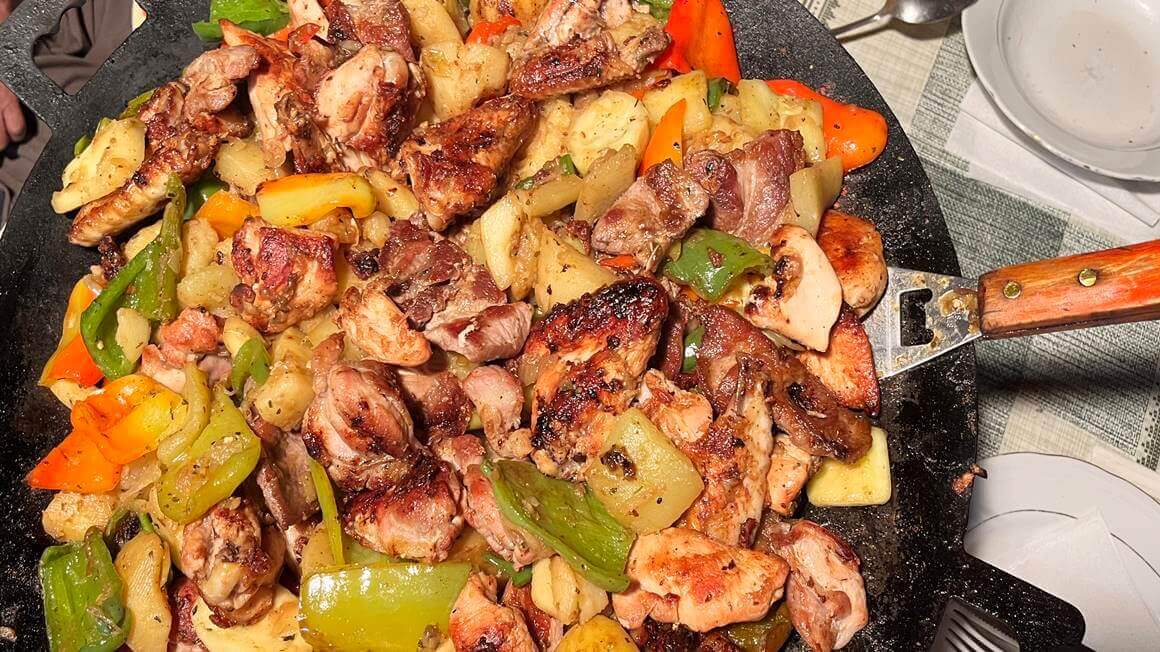
Photo: Katarina Komazec
Then there’s sarma, of course, cabbage rolls stuffed with ground meat and rice. People in Serbia are obsessed with sarma. It’s a must-have at any big occasion, especially slava, a traditional Serbian celebration of a family’s patron saint.
During slava, there’s usually a big lunch for close friends and family (in villages, this often turns into a full-on feast for a hundred people). That said, I might be the only person in Serbia who’s not crazy about sarma. I like it, I’ll eat it, but I’m not obsessed.
Now, what you absolutely can’t skip are kajmak and ajvar. I could honestly eat them every single day.
Kajmak is a creamy, salty dairy spread, kind of like clotted cream, but better. Ajvar is made from roasted red peppers, sometimes with a hint of eggplant or garlic.
Then we have pljeskavica, Serbia’s version of the burger, only way bigger and way tastier. It’s also served with fries and can be found at just about every fast food stand across the country.
In traditional restaurants, make sure to try Karadordeva šnicla, a rolled, breaded, and fried veal or pork cutlet, usually stuffed with kajmak. It’s often called the “Serbian cordon bleu,” and it’s typically served with tartar sauce and fries.
Pies, gibanica, and burek are also super popular, especially for breakfast. I love them, but let’s be honest, they’re not exactly waistline-friendly. The best burek in Belgrade, in my opinion, is at Trpkovic bakery near Slavija Square, just look for the massive line outside.
Also, a must-try traditional food is pasulj, a slow-cooked bean stew, often served with smoked bacon or ribs. It’s simple, delicious when well prepared, and totally classic Balkan.
For holidays, Serbs usually eat “pecenje”, which means slow-roasted meat, typically pork or lamb cooked to perfection.
Being Orthodox, we also have several fasting periods throughout the year, when people avoid meat and dairy products and mainly eat fish, vegetables, and plant-based dishes.
When it comes to desserts, Serbia is a delicious mix of influences. Baklava is super common here, even though it originally comes from Turkey, we’ve fully embraced it as our own.
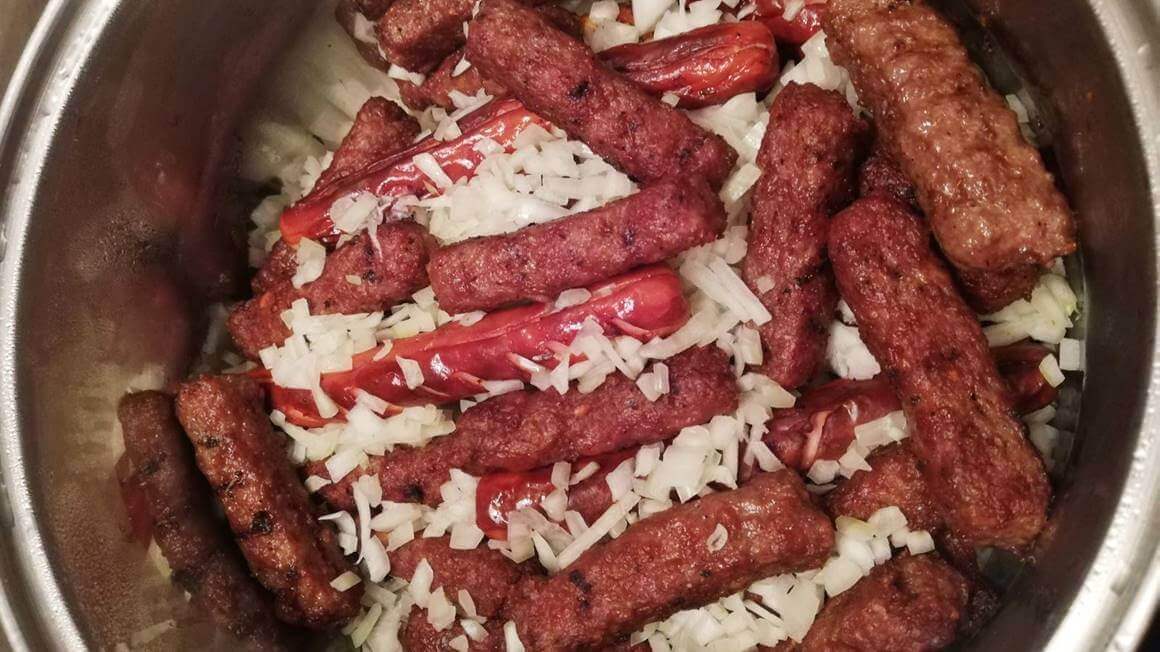
In the north, especially in Vojvodina, you’ll find strudels with poppy seeds, apples, or cherries, a nod to the Austro-Hungarian heritage. And of course, there’s the classic krempita, a custard-filled pastry that’s still served in many traditional restaurants.
But my personal favorite? Palacinke, and no, not the thick American pancakes, but thin crepes usually filled with something sweet. I love mine with Eurocrem (our local version of Nutella but way better, with both chocolate and white cream) and Plazma, which is basically Serbia’s national cookie and hands down the best-tasting biscuit in the world (not even kidding). Every Serbian will tell you the same!
Most restaurants will also offer a variety of cakes and international desserts like crème brûlée, soufflé, tiramisu, and more, so you’ll definitely have options, no matter your taste.
Of course, aside from all the traditional dishes, you’ll also find plenty of international options in Serbian restaurants; pizza, salads, pasta, fish, and seafood are all widely available, especially in cities.
So no worries, you’ll definitely find something that suits your taste. But still, trying the national specialities is a must.
Eating Habits in Serbia
Eating habits in Serbia might feel a bit different if you’re coming from somewhere with lighter or faster meals.
Breakfast is usually between 8 and 10 a.m., and can be anything from a quick pastry and yogurt to a full plate of eggs, cheese, and cold cuts.
Lunch is the main meal of the day, usually eaten between 2 and 4 p.m., and it’s a proper sit-down event – substantial, hot, and often shared.
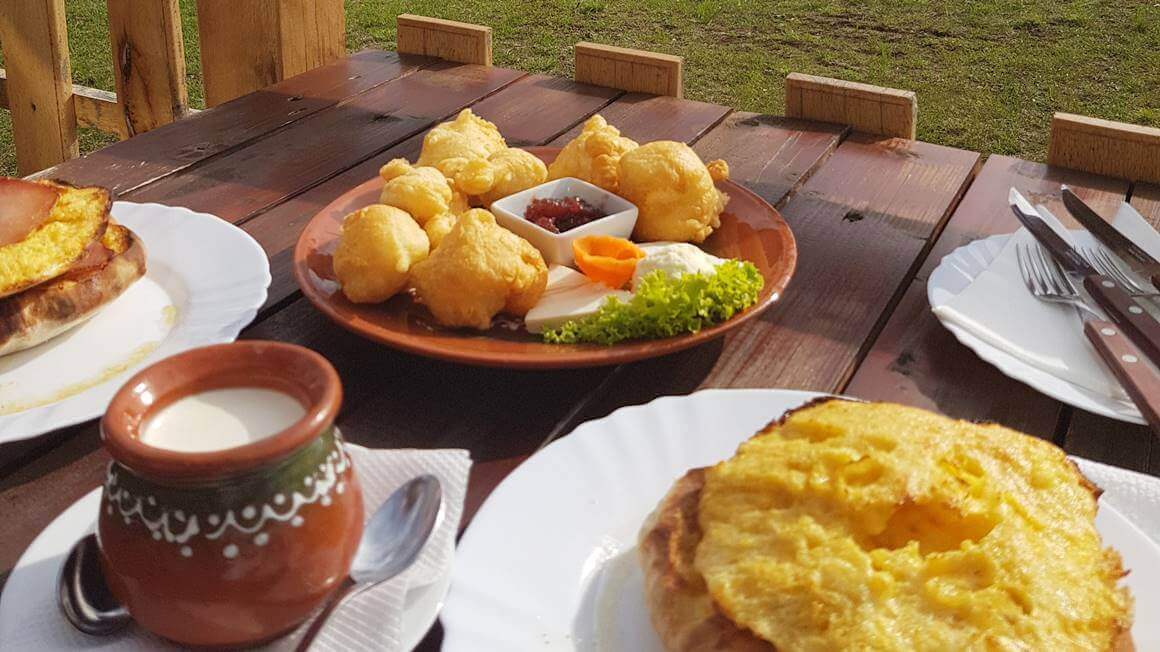
Photo: Katarina Komazec
Dinner comes later, typically after 6 or 7 p.m., and can range from light to another full-on feast depending on the day.
We don’t really do the “starter-main-dessert” routine. If there’s a soup or salad, it’s usually served with the main dish, not before.
You’ll often start the meal with a small glass of rakija as an aperitif (to “open your appetite”), and during lunch or dinner, it’s common to drink beer or wine with the meal.
Meals are social, unhurried, and usually involve way too much food – but that’s kind of the point.
A Brief History of Serbia
Serbia has a long and complicated history.
The story stretches back to ancient Roman times, when this area was a key part of the empire (fun fact: more than a dozen Roman emperors were born on what’s now Serbian soil, including Constantine the Great).
The medieval period (roughly 12th to 14th century) was Serbia’s golden age. Powerful kings from the Nemanjic dynasty, epic battles, and the rise of Orthodox Christianity, which still plays a huge role today. Many of the country’s most beautiful monasteries were built during this time and are still standing (that’s why they are so important).
Then came four long centuries under Ottoman rule (15th–19th century), followed by independence, a royal dynasty, and then straight into the chaos of the 20th century.
Serbia was heavily involved in both World Wars, and after WWII, it became part of Yugoslavia, a socialist federation that included Serbia, Croatia, Bosnia & Herzegovina, Slovenia, Montenegro, and North Macedonia.
During WWII, over 700,000 Serbs, along with Jews and Roma, were killed by the Croatian “Ustaše” regime in concentration camps, especially in territories of present-day Croatia, leaving a deep scar that’s still felt in the collective memory of the Serbian people.
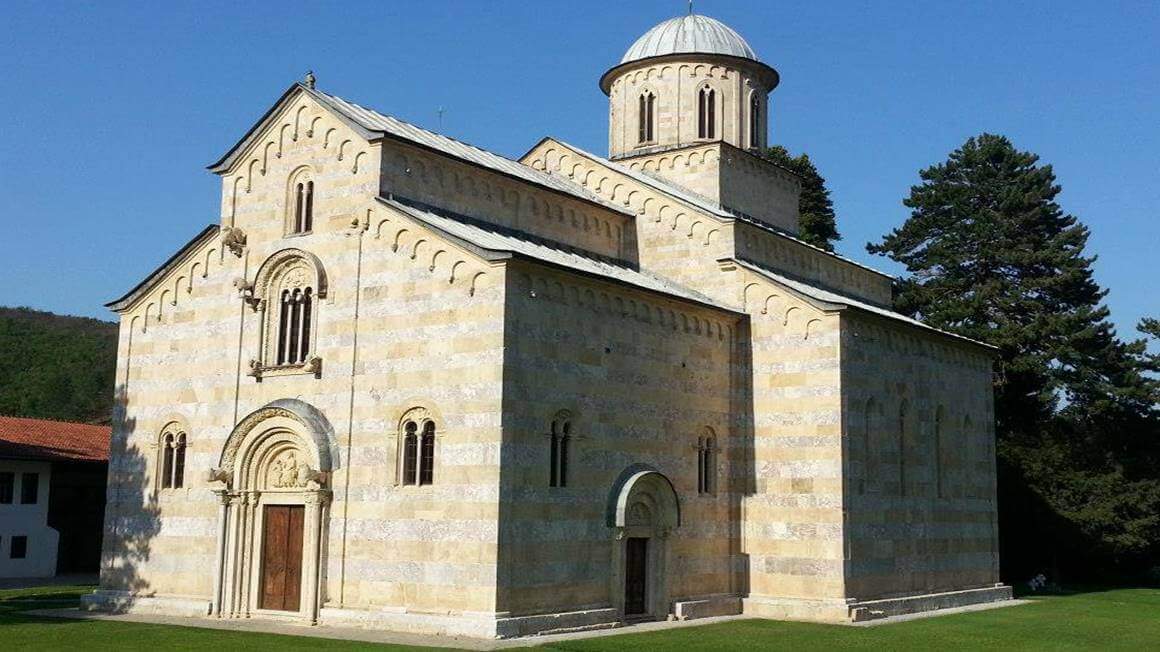
Photo: Katarina Komazec
Yugoslavia started breaking apart in the 1990s, and unfortunately, Serbia ended up being at the center of several of those conflicts.
And even though the wars ended nearly 30 years ago, people abroad still often refer to Serbia as “Yugoslavia” or think there’s a war happening. There isn’t.
Serbia is peaceful, safe, and full of people who are trying to move forward. The only major conflict since then was the 1999 NATO bombing, which is still a very emotional and painful chapter for most people here (I was 9 back then).
And then there’s Kosovo, a topic that still stirs strong feelings. Kosovo declared independence in 2008, and although it’s recognized as a state by the U.S., most EU countries, and others, Serbia officially does not accept it.
For Serbs, Kosovo is the cradle of the nation, home to over 2,000 Serbian Orthodox churches and monasteries, many of them UNESCO-listed and hundreds of years old. You’ll often hear the name “Kosovo and Metohija”: “Metohija” refers to the historic monastic estates in the region, tied deeply to the Serbian Orthodox Church.
This is why, for most Serbs, Kosovo isn’t just geography – it’s identity. It’s a deeply sensitive and emotional issue, even for young people. So if you’re visiting and the topic comes up, just know it’s personal.
Through all of this: wars, empires, borders shifting every few decades, Serbia has held on to its culture, its faith, and that proud, resilient spirit you’ll feel as soon as you start talking to locals.
FAQs About Serbia
Final Advice Before Visiting Serbia
Come to Serbia with an open heart, and be ready to leave with a few extra kilos.
If you’re arriving from the West, you’ll definitely feel that Eastern influence. And if you’re coming from the East, you’ll probably notice how much Serbs feel like Westerners (when I say this, I mean Western Europe and the U.S.) in their mindset and lifestyle.
Belgrade is like any major European capital, while the rest of the country reflects a rich mix of cultures and different influences in history.
If time allows, try to experience both sides of Serbia: the polished, touristy version and the one that’s a little more raw and real, hidden in rural areas and lesser-known spots.
I honestly believe that what will leave the strongest impression on you are the people, their warmth, directness, and huge hearts. And of course, the food, which I truly believe is some of the best and most wholesome you’ll find in Europe.
You won’t leave Serbia with just memories. You’ll leave with a bunch of stories you’ll be telling for the next ten years and impressions that will stay with you for a lifetime.
Along the way, you’ll pick up new experiences, favorite new dishes, and probably a few new friends too.
Buy Us a Coffee!
A couple of you lovely readers suggested we set up a tip jar for direct support as an alternative to booking through our links, since we’ve decided to keep the site ad-free. So here it is!
You can now buy The Broke Backpacker a coffee. If you like and use our content to plan your trips, it’s a much appreciated way to show appreciation 🙂


